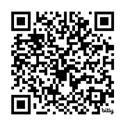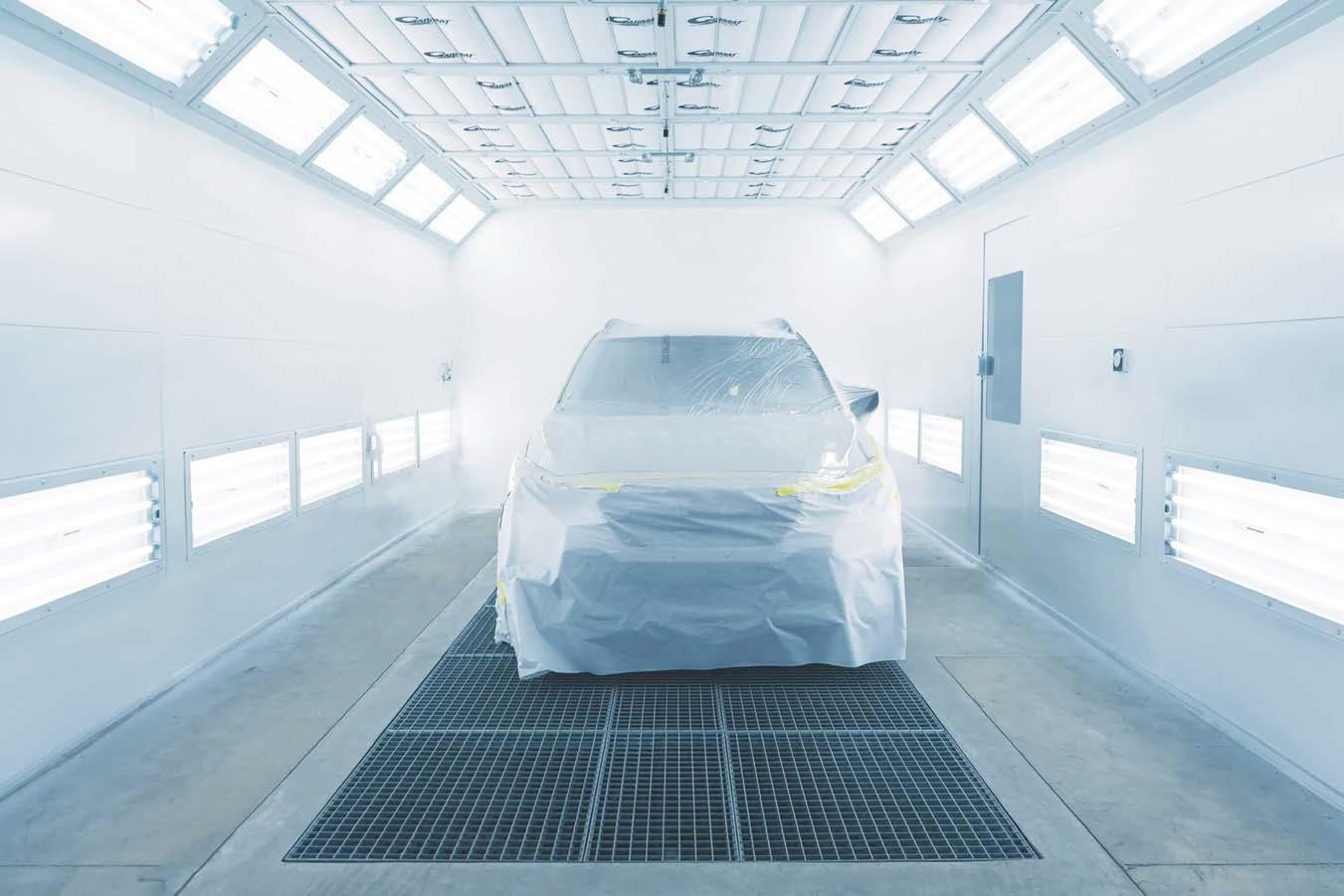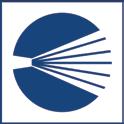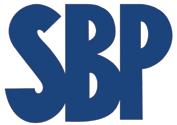
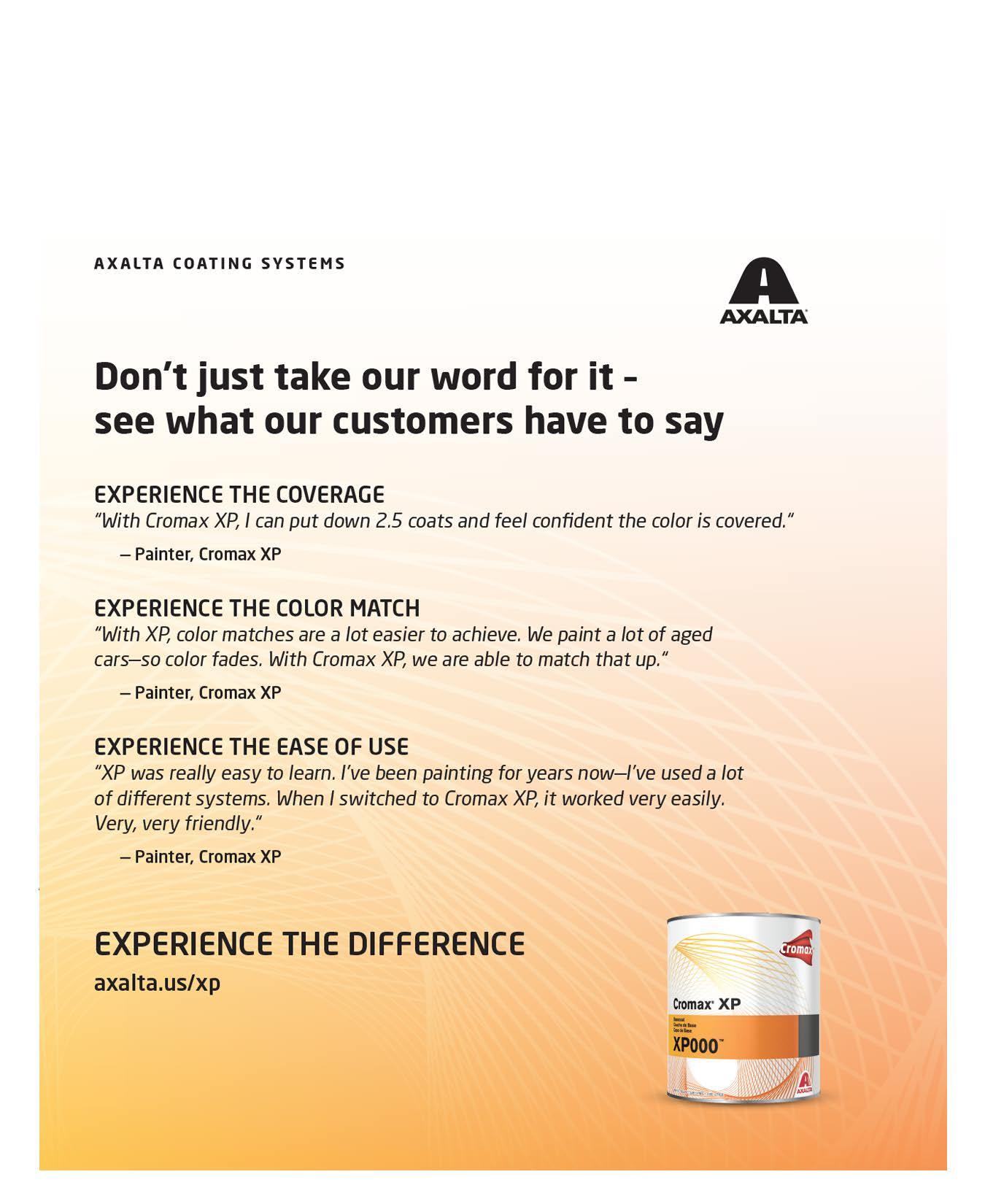



Electric vehicle sales are steadily growing worldwide, but perhaps not at the rate some automakers anticipated. Some are adjusting their production strategies to increase profitability, while others are forging ahead by introducing new EV models.
IDTechEx recently reported a 20% dip in global EV sales in the first quarter of 2024 compared to the last quarter of 2023 — but a 30% growth when compared with the
same quarter last year.
The report credited the sales dip to the consistent seasonal trend of lower sales in the first quarter compared to the fourth quarter. Despite this, EV sales have shown a steady upward trajectory year-on-year. Furthermore, regional sales comparisons indicate a rise in EV sales across all major markets, including China, Europe and the U.S.
Concerns about a downturn in the EV market often arise from

Dave Cottrell, chairman of the Northeast Ohio I-CAR Committee, in April ran more than 200 miles between two amusement parks in Ohio: Cedar Point in Sandusky and Kings Island in Cincinnati. The roughly four-day trek raised money for the Ohio activities of the Collision Repair Education Foundation (CREF), a national nonprofit that supports collision repair educational programs, schools and students, and connects students with career opportunities.
In the race, dubbed the Coast to Coaster 200, Cottrell covered 213 miles April 25-29, through hills, flatland and 20 mph headwinds. It took “The
REGIONAL NEWS
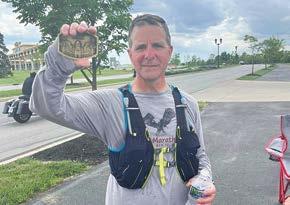
Miracle Man” — as some of his repair shop technicians call him — a total of four days, nine hours and three minutes. He started alongside 30
l CONTINUED ON PAGE 31
Illinois passed a bill requiring auto insurance companies to provide the owner of a vehicle declared a total loss with a description of how that determination was made.
The bill, HB5559, which applies to all policies issued or renewed after July 1, 2025, amends the Illinois Insurance Code, to require the insurance company to provide the insured with any relevant information to the total loss determination, including repair estimate, estimated vehicle salvage value, assessed market value and
other costs and calculations used. This requirement aims to ensure that policyholders are fully informed of their rights and options at a critical time.
“We were thrilled to work with consumer advocates, insurance providers and the Alliance of Automotive Service Providers of Illinois to increase transparency around an insurance company’s decision to total a vehicle,” said Rep. Tracy Katz Muhl, D-57, the bill’s sponsor. “For many families, a car accident is a financial
l CONTINUED ON PAGE 14
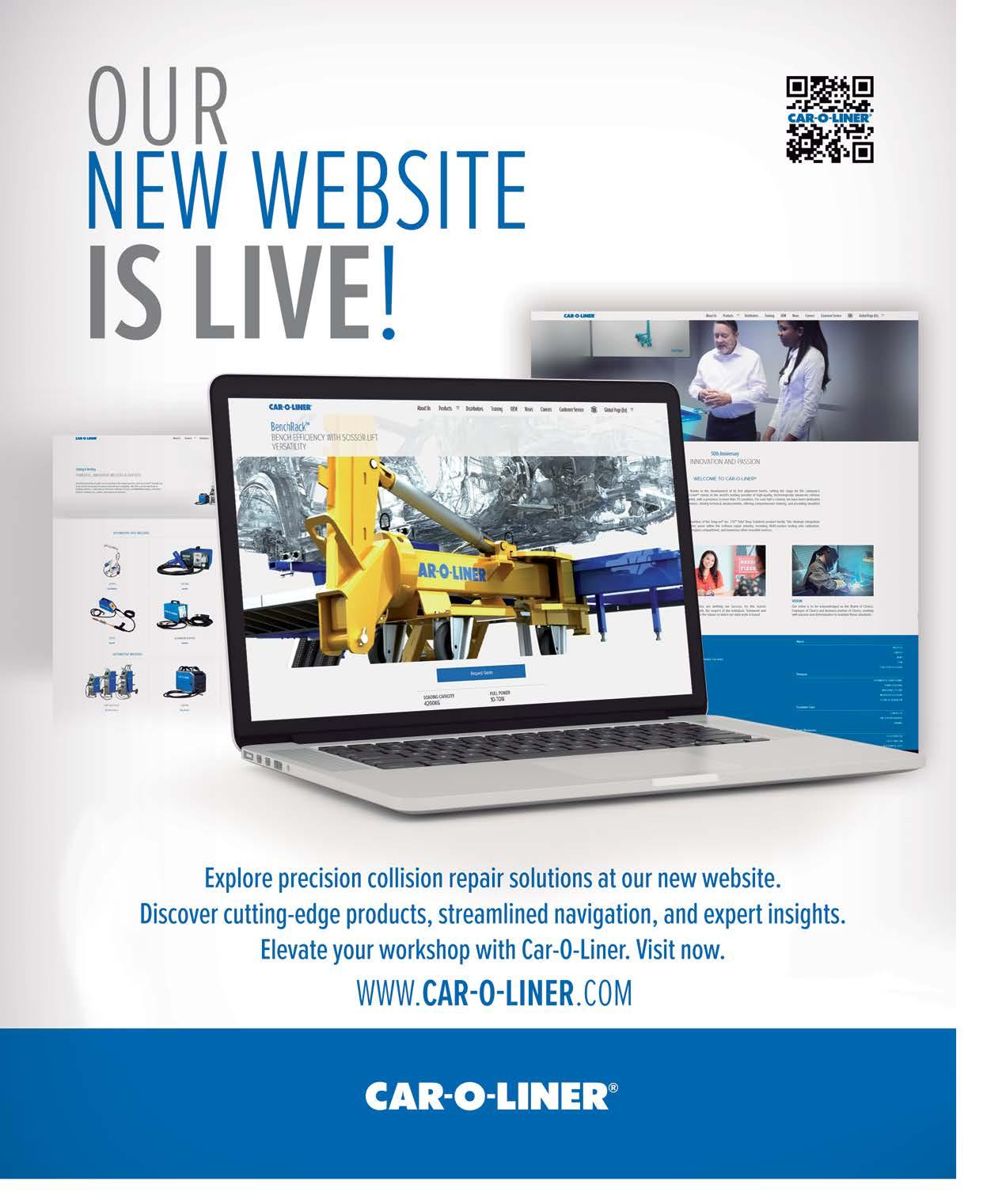

$8M Vehicle Theft Ring Busted in Michigan 6
‘The Miracle Man’ Raises Money for Collision Repair Education with Ultramarathon 1
ADAS Calibration Facility Owners Open 2nd Location in Michigan 38
Agreement Doubles Wages for UAW Workers at Ultium Cells’ Ohio Plant 14
Firelands Auto Group Acquires Toyota, Volkswagen Dealerships in Wooster, OH 44
Illinois Passes Bill Increasing Transparency in Total Loss
Diagnostics Preferred Supplier for Fix Network 44 Automakers Adjust EV Strategies to Consumer Response 1 Dangerous Takata Airbags Still on Roads Despite Decade of Recalls 45
Mike Anderson
Your Body Shop’s Performance Based on Gross Sales Per Tech 9
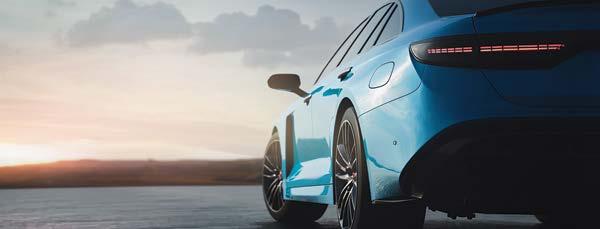
Matt Ebert is the founder and CEO of Crash Champions, which grew from a regional MSO in the Chicago market to a national consolidator with nearly 650 locations — all in the span of about five years.
Ebert appeared on The Collision Vision podcast, driven by Autobody News and hosted by Cole Strandberg, to talk about his start in the industry and how he grew Crash Champions, offering advice for other collision shop owners looking to improve or expand their businesses.
When Ebert was 16, he wrecked his car. He knew a technician who worked on cars in the garage behind his house. Ebert asked the tech to show him how to fix his car, then started helping the tech fix other cars.
“I got into it literally by accident,” Ebert said.
In 1999, when Ebert was in his late 20s, he and the owner of a repair shop he was managing opened another shop together, New Lenox Auto Body in New Lenox, IL. They were partners for 15 years, until Ebert’s partner retired. Ebert bought him out and started growing the business into multiple locations. In 2014, it was rebranded Crash Champions.
By 2019, Ebert had grown Crash Champions to 11 locations. That year, he took on a private equity partner, and Crash Champions took off. Today, the MSO has nearly 650 locations nationwide.
Strandberg asked Ebert about some of the challenges he faced early in his career.
“I came from nothing, so it’s always been a challenge,” Ebert said. He said he once took out a total of $100,000 in cash advances on multiple credit cards.
Ebert and his partner in New Lenox Auto Body also dealt with the effects of the Sept. 11, 2001, terrorist attacks and the Great Recession of 2008. Later, after Crash Champions took on its private equity investor, it acquired its first two shops in new markets on March 1, 2020 — just before the COVID-19 pandemic shutdowns.
“The biggest lesson I learned is there’s always going to be a challenge,” Ebert said.
Pivotal Moments in Crash Champions’ Growth Crash Champions has twice bought MSOs that were bigger than it —
one of its first acquisitions, Pacific Elite in Southern California in 2020, had 23 shops, and in 2022, Crash Champions acquired Service King, which had more than 330 shops in 24 states.
Another pivotal moment was the decision to take on a private equity partner.
“For me, it was a little bit about what would be the risk of doing it alone,” Ebert said. At the time, Crash Champions only had locations in
uses to attract and retain talent include rewarding employees for recruiting others, and implementing apprentice programs for technicians and service advisors.
Ebert said Crash Champions currently uses the same EV training through I-CAR and automakers available to any repair shop, though he thinks it will develop internal training as it grows its footprint in luxury and EV repair. The company already has internal training on
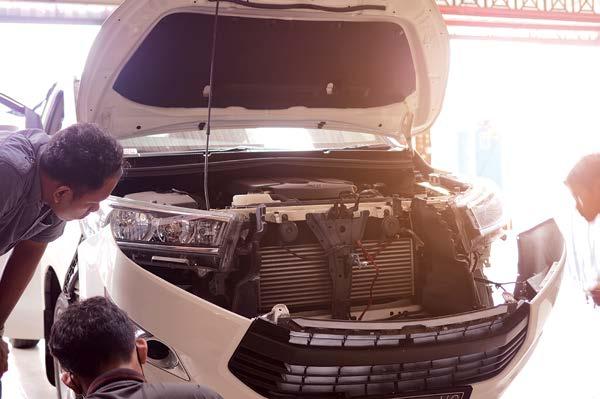
Chicago — the most consolidated market in the industry. Ebert said he thought about what the company would be worth if he grew it to 20 shops on his own, or if anyone else would want to buy it.
“So at some point in my life, if I was going to end up getting paid for all the work [I put into growing it], what would be my exit plan?” Ebert said.
In addition, in 2019, it was already clear vehicles would continue to get more sophisticated -- and it would take more capital to be able to invest in the equipment and people needed to repair them.
“So weighing all of those, for me, was why I ended up going the route I went,” he said.
“Robots aren’t going to be fixing cars anytime soon,” Ebert said. To attract employees, Crash Champions’ biggest focus is on its culture.
“So much depends on the leadership in your ability to retain people once you get them to get them there, as well as be able to attract them,” he said.
To facilitate that, Crash Champions puts its management team through a proprietary training program. “We’ve seen great results from that,” Ebert said.
Other methods the company
when they do make the decision to expand, Ebert answered from the perspective of an acquirer.
“It’s not about the number of locations, it’s the quality of the locations,” he said. “There’s just so much investment and overhead expense in this industry. You have to fix so many cars just to get to breakeven. And so having five shops that are barely at the break-even point doesn’t create a great business.”
Ebert said the biggest mistake is thinking sheer shop count numbers is going to make the business more attractive to a potential buyer. “It’s not about market domination. It should be about quality.”
“So at some point in my life, if I was going to end up getting paid for all the work [I put into growing Crash Champions], what would be my exit plan?”MATT EBERT FOUNDER AND CEO, CRASH CHAMPIONS
The Future of Collision Repair
ADAS, because it has been doing that work in-house for so long.
“I saw the need for that when we were just that handful of locations, six at the time, in Chicago,” Ebert said.
Ebert said he learned most industries that undergo consolidation continue until they’re about 65% consolidated; the collision repair industry is currently at about 30%.
“It still has a long way to go before it’s done consolidating,” he said. “If your desire is to grow and grow, there’s room.”
“I wasn’t living an extravagant lifestyle ever,” Ebert said. “It was keeping the money in the business and at work and growing it. To compete in the future, I think facilities need to be nice. Equipment needs to be able to repair the current vehicles.”
Another key is to surround yourself with the right people. “I can cite several examples of where I brought in people who have been where I haven’t been yet, so that they could help me not learn some of the lessons the hard way,” Ebert said.
When asked about mistakes smaller shop owners should avoid
Ebert said none of his predictions will come as a surprise: consolidation will continue to accelerate; claims will increasingly go through DRP programs, and thus to MSOs; vehicle complexity will continue to advance, requiring shops to invest in new technology; and the talent shortage will continue to present challenges.
To address those, Ebert said Crash Champions is spending more than $10 million in 2024 alone on new equipment and training for its team.
He said the company’s goal is to have great facilities, be easy to work for and have the best team. To attract more people, the collision repair industry needs to better promote itself as a viable career path, and raise technician pay to be able to compete with other trades.
Strandberg asked what legacy Ebert hopes to leave with Crash Champions and the industry at large when he calls it a career.
Ebert said he is proud the company can still say it is founderled, as it makes it relatable to other shop owners thinking about selling. “I was just one shop not that long ago and sat in every seat,” he said.
He said he is also proud of the team the company has built. “It’s a whole team of people working so hard at this. Everybody loves what we’re doing here.”
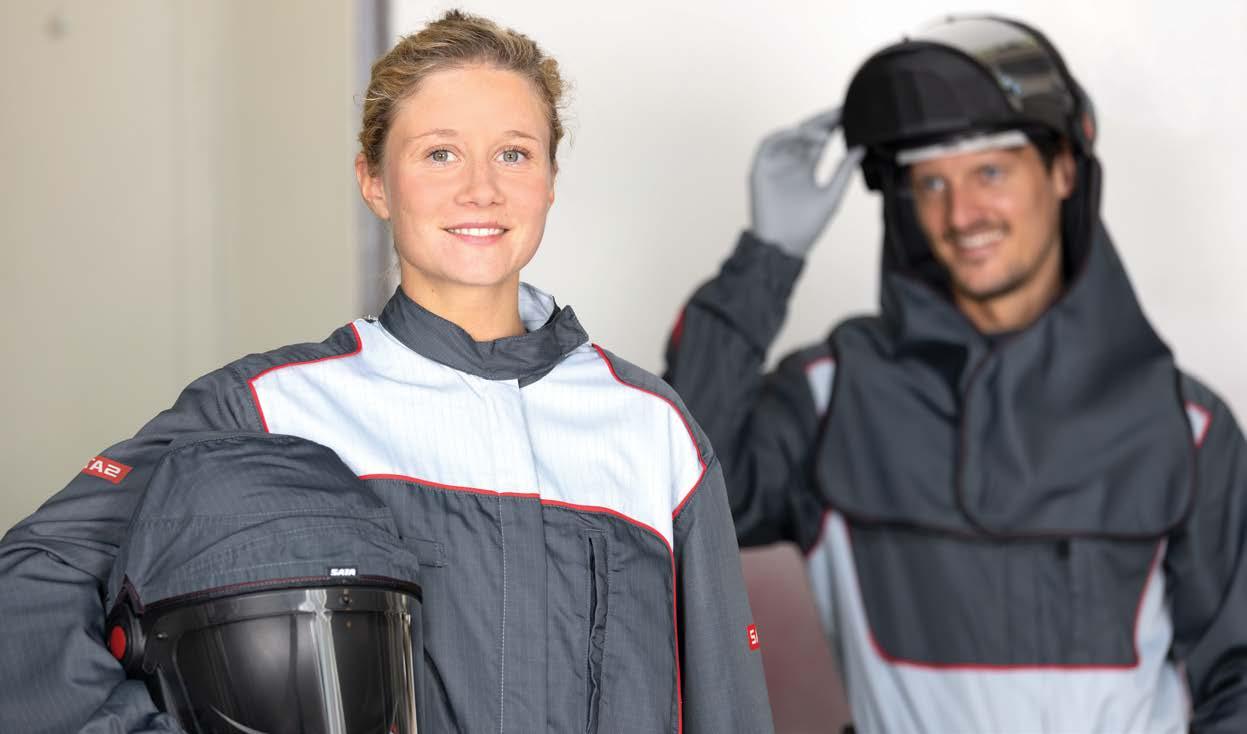
The SATA air vision 5000 puts the focus on effective health protection and lets you experience a whole new and comfortable way of breathing, due to a completely redesigned breathing air supply system. With its modern, ergonomic design, the hood can be adapted to fit almost any head shape, allowing the individual adjustment of its circumference, height and position.
Breathing air quality: Connects to a clean air supplied system, eliminating potential risks from breathing contaminated spray booth air.
No inhalation resistance, very comfortable breathing
High protection level (protects up to 100 times the TRK-value*)
Non-reflecting view due to solvent-resistant special foil
Low operating costs, quick pay-off of purchase costs
Soft-stream flow-optimized air distribution in the hood
Rigid bump cap for safer work conditions
SATA CCS Discs (Color Code System) allow to personalize hood, SATA air regulator and SATA air carbon regulator
To be used in conjunction with a filter unit, preferably SATA filter 584; air supply via approved breathing hose
*TRK –Technic al Reference Concentr ation (TRC)
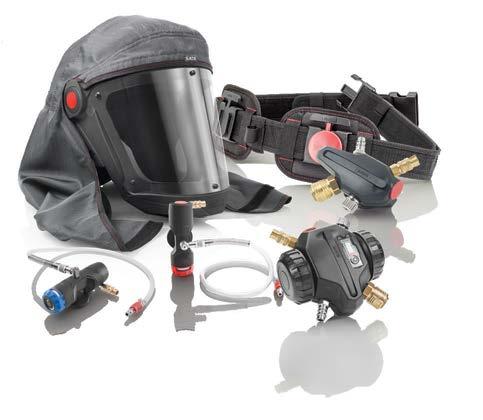
on the SATA air vision 5000
USA Inc. 1 Sata Drive • PO Box 46 Spring Valley, MN 55975
Phone: 800-533-8016
E-mail: satajet@satausa.com www.satausa.com
Michigan authorities announced the arrests of six members of an alleged car theft ring responsible for stealing more than 400 vehicles worth about $8 million in Southeast Michigan.
The alleged ring targeted new vehicle lots at manufacturing facilities, dealerships, parking lots and residential areas. The vehicles were then sold, well below market value, to buyers who wanted unregistered vehicles. Those vehicles have been linked to several crimes, including armed robberies, weapons offenses, felony evasion of police, car-jackings, murder and attempted murder. Authorities believe the group uses countersurveillance to steal vehicles quickly and efficiently, allegedly shooting at officers and ramming security vehicles if confronted.
More than 200 officers from state, federal and local agencies were involved in executing eight arrest warrants May 15, which led to the recovery of seven vehicles, numerous car parts, electronic key fobs and nine firearms.
This operation also involved the seizure of stolen dealership plates and various burglary tools.
Each defendant has been charged with conducting a criminal enterprise and use of a computer to commit a crime, both 20-year felonies, and multiple counts of receiving and concealing a stolen vehicle.
Those charged include Kevin Stevenson Jr., 21, of Detroit; Joseph Doyle, 25, of Onsted; Braylen Green, 20, of Wixom; Dejhon Bush, 20, of Detroit; Zamarr Johnson, 18, of Troy, also charged with two counts of fourthdegree fleeing or eluding; and Desmond Wilson, 21, of Detroit, also charged with one count of breaking and entering with intent.
Authorities are still looking for two additional suspects who were not named. They are also working to establish cases against other members of the auto theft ring and buyers of the stolen vehicles.
The arrests were the culmination of a collaboration between the Troy Police Department, which began looking
into the crime ring in August 2023, and the FORCE Team, which joined the investigation early this year.
“This has become an epidemic of organized criminals preying on businesses in our communities and putting law enforcement and the general public in harm s way, not just during the theft itself, but on the streets after they have stolen the vehicles,”
ROD ALBERTS DIRECTORCO-EXECUTIVE
OF THE DETROIT AUTO DEALERS ASSOCIATION
I am extremely proud of the work that has been done by my staff and all of the participating agencies to arrest and prosecute these violent and reckless criminals, said Troy Police Chief Frank Nastasi
The activities of criminal organizations like these go far beyond theft, said Michigan
Attorney General Dana Nessel
They cause millions in financial losses to our retail partners, sow fear and endanger lives. Vehicles stolen as part of this criminal enterprise go on to become tools in violence, posing additional threats to public safety. I commend the hard work of the FORCE Team, Troy Police Department, and other local law enforcement agencies to investigate and dismantle this operation.
Rod Alberts , co-executive director of the Detroit Auto Dealers Association, said he has never seen such bold and brazen thefts from car dealerships in his 30-plus years in the industry.
“This has become an epidemic of organized criminals preying on businesses in our communities and putting law enforcement and the general public in harm s way, not just during the theft itself, but on the streets after they have stolen the vehicles,” Alberts said. “I want to thank the attorney general and her staff for the steps and actions they have taken. It will make a difference.


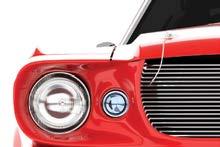
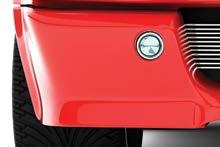
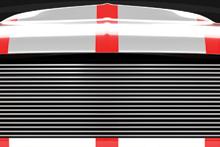
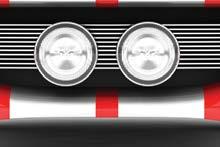


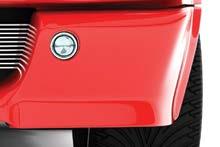


As vehicles continue to grow larger, heavier and faster, accident severity is increasing, but the wider availability of ADAS features like automatic emergency braking (AEB) is showing an effect on accident frequency
That is according to Kay Wakeman, a research analyst with the Insurance Institute for Highway Safety (IIHS) and Highway Loss Data Institute (HLDI), who spoke about vehicle fleet trends and how they will affect collision repair during the 2024 Women’s Industry Network (WIN) Annual Conference, held in May in Newport Beach, CA.
which affects the median (overall average) and mean (middle number, when placed in order.)
“Claims severity is a really complicated issue,” Wakeman said. “Yes, there’s a cost of calibration associated with these systems, but there’s also this element that the types of claims that are still happening look different than what we’re used to.”
In the early 1980s, the car was king, a small percentage of people drove pickup trucks and no one drove an SUV, Wakeman said. As of 2022, 50% of the vehicles sold in the U.S. are SUVs. Pickup trucks have
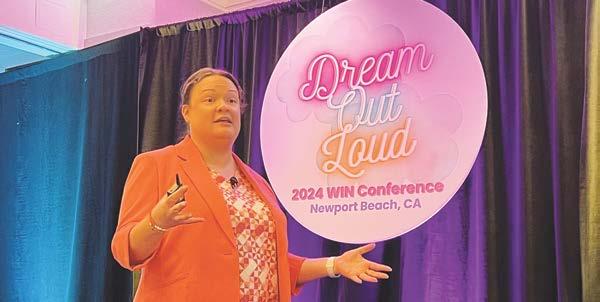
Wakeman said the average age of vehicles on the road in the U.S. today has grown to 12 years old, meaning it will take a while for the effects of technology like ADAS features, currently widely available only on newer models, to be reflected in crash data.
As of 2022, about 20% of U.S. vehicles have AEB. Wakeman said it will likely take until 2045 to 2050 before 95% of the U.S. vehicle fleet has the technology, which, it was recently announced, will be a standard feature on all new light-duty passenger vehicles by 2029.
“These things are going to become more and more prevalent, so as you’re thinking about the future at your shops and the types of vehicles you’re going to be repairing, know that this is coming,” Wakeman said.
Adding ADAS to vehicles has proven to drive down the frequency of accident claims, but it increases the average severity, Wakeman said.
Part of that is due to “mean shifting.” ADAS systems that work at low speeds help prevent a lot of “lowdollar” claims, like those in parking lots, removing them from the data set. That leaves higher-dollar claims as the larger share of the entire set,
expensive to purchase and repair, which can impact severity.
Shifting to pickup trucks, small pickups’ popularity hit a low in 2014, but have rebounded recently, helped by Ford bringing back its Ranger and introducing the smaller Maverick. However, larger models, like the Ford F-150, still have the largest chunk of the market.
In 1981, most trucks had a twodoor cab. Today, more than 90% have a four-door cab, which are much bigger and heavier than the twodoor version, adding more mass and weight to crashes.
Looking at SUVs, most sold are small or mid-size, as many of the mini and large models have been phased out, similar to cars.
In the 1980s, there was no such thing as a luxury SUV, but they now make up nearly 20% of the SUVs sold, Wakeman said.
And while truck owners seem to be concentrated in certain parts of the
last 40 years, Wakeman said — it has tripled for pickup trucks and doubled for SUVs and cars.
“We now have vehicles capable of going faster while weighing more than they ever have before,” she said. “That’s leading to much more force in a crash.”
In 1999, the highest-powered vehicle in the HLDI vehicle database was the Ferrari 550 Maranello, which had 478 hp and cost $220,000. There were only 239 in the database.
Fast forward to 2019, and that same amount of power was available for $47,000 in a Ford Mustang Bullitt. A Chevy Camaro with a slightly lower rating of 455 horsepower only cost $27,000. There were 2,500 and 6,000 of each, respectively, in the database.
“Horsepower has become a lot more affordable for the average person,” Wakeman said.
Research shows people drive
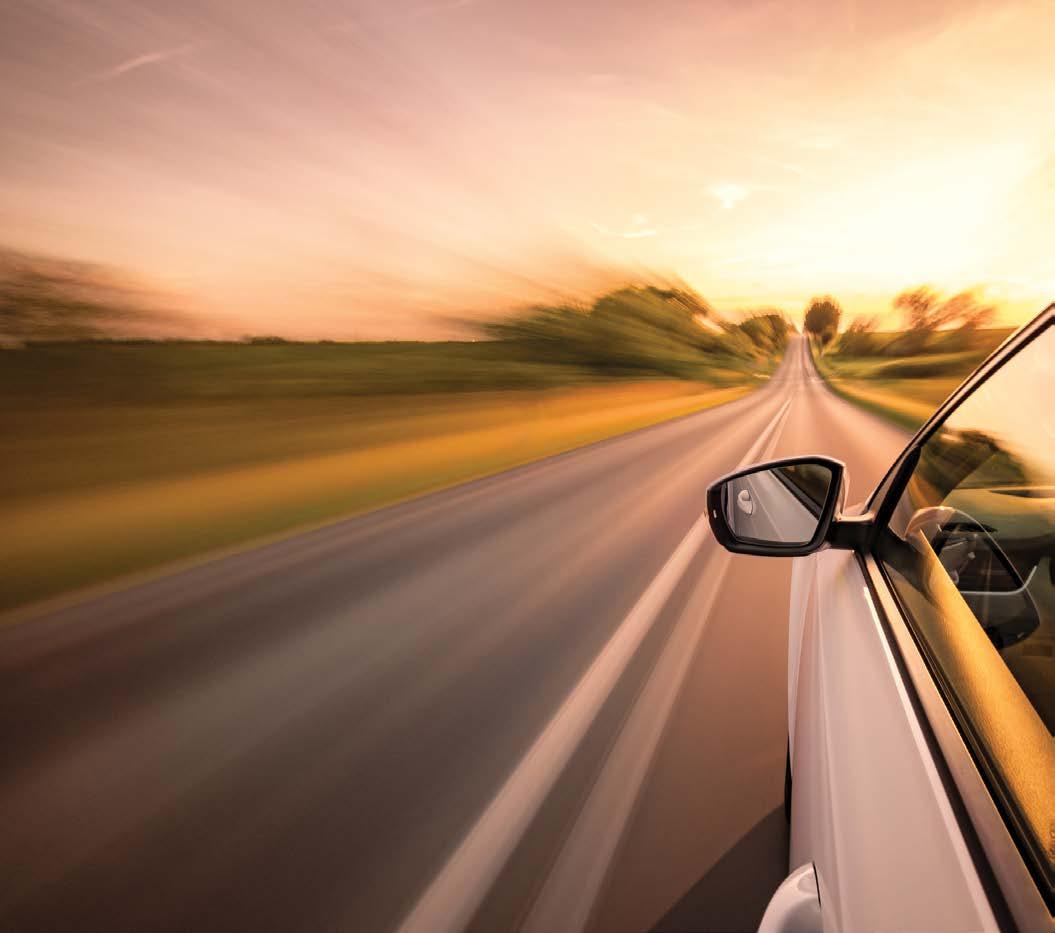

Mike Anderson — From the Desk of Mike Anderson
One of the things we’ve been tracking in our 20 Groups, the Spartans, are average sales produced per month per body tech and paint tech. A lot of people talk about measuring technician efficiencies, but I prefer to monitor the average sales produced per person.
is $55,000 a month for each of the five people working in the body department.
Today, we see shops averaging about $65,000 to $75,000 in gross sales per person in the body department. Sure, there are some outliers, those with an average far below that, and some north of $100,000 per person in the body department. But when you exclude those high and low outliers, the average is in that $65,000 to $75,000 range.
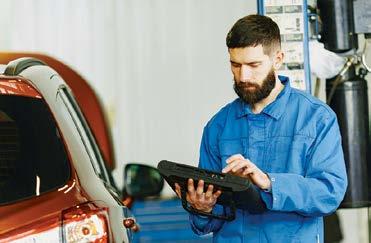
In the body department, for example, I would say the average shop prior to COVID had monthly gross sales of between $55,000 and $65,000 per body tech. If a shop had gross monthly sales of $275,000
So what if you’re not hitting that average? I would bet it’s because of one or more of the following reasons.
1. Estimate quality. There are likely labor operations your techs are performing that aren’t being included on estimates or final invoices.
2. Administrative bottlenecks. Your technicians could produce more, but they’re waiting for an
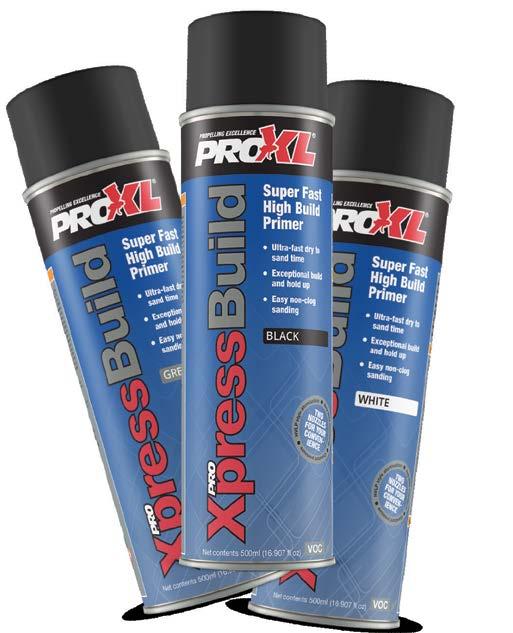
the most of their time. Or the techs might be performing some of the administrative functions — checking in their own parts, for example — because the shop is running lean on admin staff. It’s important to understand what that’s costing you. If your shop is making 45% gross profit (unloaded) on the $75,000 a technician is producing in a month, take that $33,750 and divide it by the 160 hours the technician works in the month. Having that body tech checking in his own parts is costing you about $211 per hour in lost potential gross profit.
3. Skill sets or training. Maybe you have a lot of entry-level apprentices. Your average sales per tech may be low in the short-term, but it’s a little pain for the longer-term gain. But also think about what training you can get techs — from I-CAR, 3M or BETAG, etc.— to boost their productivity.
4. Overstaffing. I’ve seen some shops be overstaffed at times ahead of opening another shop location,
be shorter-term issues rather than chronic overstaffing.
5. Scheduling. A low average could also be a sign you’re not scheduling in the right mix of work based on the skill sets of your techs.
6. Pay plans. Could your pay plan improve how incentivized your team is to produce? Again, pay plans vary based on shop leadership and culture, but it can contribute to monthly sales produced per technician.
These are the most common reasons I see why shops’ numbers per tech aren’t keeping up with the industry, but there certainly are other potential nuances as well. A high average gross sales per body technician could be inflated by a lot of PDR work after a hailstorm, for example. It could be affected by techs staying late to work, or coming in early or on weekends. A high labor rate, or a mix of work that includes a lot of high-end vehicles, will affect your average. So it’s important to look for all the contributing factors
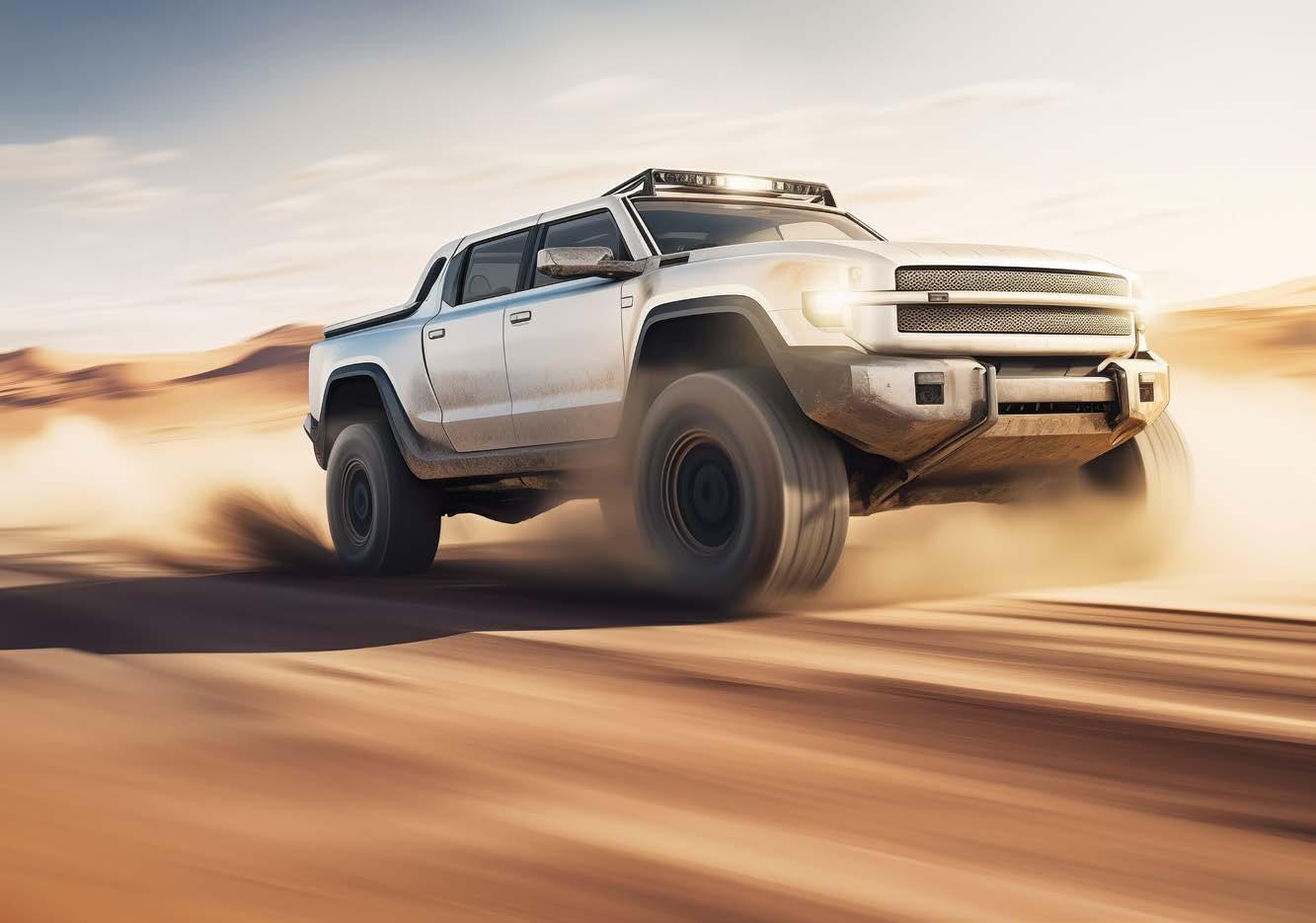
With an increasing number of newcar buyers paying a premium ranging from $1,000 to $17,000 or more for a matte or semi-gloss finish, they’re likely to be even more attuned to any refinishing done to that vehicle following auto body work. The Collision Industry Conference’s Parts and Materials Committee paint representatives at this spring’s CIC, held in Seattle, offered tips for successfully matching the look and gloss of these finishes.
Bradley Letourneau, a trainer with BASF, said most automakers view the finishes as custom.
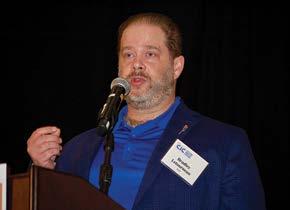
“So it’s not like a manufacturer will measure gloss unit and say, ‘OK, in order for it to be a frozen finish or a piano finish, it has to be within a certain amount of gloss,’” Letourneau said. “They kind of take a look at it, and as long as there are no big runs, dust or dirt in it, it goes to the lot and it gets sold. So because there are no industry standards, these are viewed as custom. You should expect to see a lot of variation within the sheen.”
He said he teaches refinishers the sheen will impact the color a lot more than the color will impact the sheen.
“Time and time again, I see painters doing their first matte finish think that their color is wrong when it’s not,” he said. “It’s actually the sheen that they need to adjust to get that proper match. Typically, if we have a bad color match, we can blend that color out so the customer can’t see it. With a matte vehicle, we’re not blending clear coat. We have to do a panel match. There is no option to blend that clear out to transition it into what is currently on the vehicle. So matching of the sheen is always done by panel match.” He shared photos showing how three panels, each with the same
color, appeared different based on whether a matte, semi-gloss or medium gloss clear was applied, as well as how two panels with the same color appeared different based on whether one coat or two of the same matte clear was applied.
Painters must consider which method and process to use, Letourneau said.
“Both can work, but if you’re going to choose just one coat of clear, you must understand how that’s going to impact the color and the shade of the vehicle,” he added.
Letourneau said it’s also important to view the matte finish from the correct angle.
“All too often, you’ll see a technician look at it at from a 90-degree angle,” Letourneau said. “This isn’t going to a give you an accurate representation of the sheen. The best way to view these is from between a 5-degree and a 15-degree angle. Especially with your test panel. When you’re placing it against the panel you’re trying to match, view it at a 15- or 5-degree angle.”
He said creating multiple test panels and documenting all the variables for each — spray gun and tip size, clear coat used, flash time, humidity, bake time and temperature — is even more critical with matte finishes than with traditional gloss finishes.
“If you alter any of those variables, you’re going to get a different result,” Letourneau said. “Polishing or wet sanding is impossible, so you’ve got one chance to do this correctly.”
He said he and trainers from other paint companies went to the BMW training center in New Jersey several years ago, and they each sprayed a test panel with the same variables.
“We all used the same gun, the same clear coat, the same hardener,
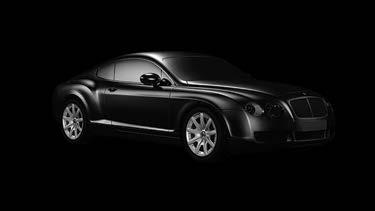
the same everything,” he said. “So every variable was controlled.”
Still, there was significant variation among the test panels, showing that even how a painter sprays can make a difference in the appearance of a matte finish. The manufacturers’ approved products and mil thickness have to be noted, he said. The use of
a gloss meter can cut back “quite a bit” on preparation time.
“And here’s where sometimes I get into some arguments with some shops or insurance companies: always refinish two or more panels,” Letourneau said. “Usually it’s best to
“It’s like anything else: these are actually pretty simple to do once you’ve done a handful of them.”
BRADLEY LETOURNEAU BASF
paint the whole side because, again, we are panel matching the sheen. We can’t blend the sheen out. So in order to minimize variation and increase the odds of success, paint the whole side.”
Improper washing of vehicles with a matte finish is the primary reason a warranty gets voided, he said, so make sure to use the manufacturer’s recommended products and process for detailing the vehicle after it is refinished.
“I’m not trying to scare anyone off,” Letourneau said of matte refinishing. “It’s like anything else: these are actually pretty simple to do once

you’ve done a handful of them. It’s really all about preparation.”
The committee’s presentation seemed to reassure attendees about matte finishes rather than scaring them off. At the start of the session, a poll of CIC attendees found 21% of shops said they likely wouldn’t accept a matte finish job, and another 16% were “on the fence” about it; asked again at the end of the session, just 3% were still on the fence and the percentage who said they wouldn’t accept a matte finish job was down to just 13%.
California shop owner Kye Yeung went a step further and said shops “almost have to have” a gloss meter to refinish matte vehicles successfully. The meters use three cameras to measure the gloss on a scale of 1 to 100, he said, and “can differentiate the amount of gloss that the human eye can’t detect.” They can be as much as $5,000.
“But we’ve done some research, and [found one] from eBay that was $400,” Yeung said. “We found that it was pretty consistent, that there was really no difference [between the two] because we’re not sending people to the moon, we’re just painting vehicles.”










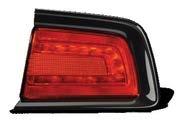


As new technology is developed to advance autonomous driving features in modern vehicles, start-up companies, like NODAR, are being established to help accelerate mass-market autonomy.
In April 2023, NODAR received the prestigious Grand Prix ACF AutoTech award in Paris, France. The computer vision company, based in Somerville, MA, is building next-generation 3D perception technology for autonomous vehicles (AVs).
To learn more about how this technology is expected to be used in ADAS and AVs, Autobody News talked to NODAR co-founder and COO Brad Rosen. The entrepreneur has a background in software engineering and an MBA from MIT. Over his career, he has been part of seven venturebacked startups where he held roles ranging from software engineer to CEO.
Q:A:
Can you tell us about NODAR?
Dr. Leaf Jiang founded NODAR in 2018 after receiving his B.S., M.S. and PhD at MIT, where he studied and implemented optoelectronic systems. As a recognized expert in light detection and ranging technology (lidar) systems, he spent 12 years at MIT Lincoln Laboratory building lidar systems for the U.S. military. I joined the company in 2019 to help Leaf develop the business plan around the camera-based 3D sensing technology he had been working on, as well as raise money.
Q:
Why is NODAR focusing on 3D sensing technology rather than lidar?
A:
Lidar is a useful and precise tool, but is not perfect for all applications requiring 3D information. Lidar is very expensive due to the electronic components required to measure photons, and lidar has low resolution as compared with cameras. Another shortcoming is that most lidars to date have spinning mechanisms, which break after about 7,000 hours. Knowing these points and that most intelligent machines regardless of market — whether vehicles or robots or monitoring equipment — will require reliable 3D information, Leaf set out to build a less expensive, higher performing, and more robust 3D ranging solution than lidar. Rather than lasers, Leaf used cameras and a technique that dates to the late 1800s called stereo vision, also referred
to as binocular vision, which can produce extremely accurate distance measurements.
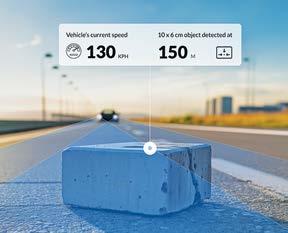
Q: Can you explain NODAR s 3D ensing technology?
A: Autonomous vehicles require real-time and reliable longrange 3D information to navigate their environments safely and measure distances. NODAR’s patentpending Hammerhead™ 3D sensing technology was created to deliver new levels of safety to driver-assisted and full AVs.
The platform is based on untethered (independently mounted), off-theshelf automotive-grade cameras and NODAR software. It is for vehicles of any size — including automobiles, aircraft, ships, last-mile delivery robots and trains — and can maintain performance in harsh environments, such as highvibration, off-road or inclement weather, as well as low light conditions. NODAR’s long-range and high resolution allow for quick detection of small objects at long range, such as a black tire on the road at 200 meters. Having reliable 3D depth is critical for safe operation for any autonomous vehicle or safety monitoring application.
Q: How did hammerhead sharks inspire NODAR’s 3D technology?
A: Hammerhead sharks have exceptional depth perception due to their widely set eyes. NODAR Hammerhead™ employs widely positioned cameras in a similar way to calculate depth with exceptional precision by calibrating the cameras in real time, in software. Whether tracking prey in three dimensions through the ocean or navigating a complex and changing roadway, a wide-baseline vision system will outperform other types of 3D sensing. This allows
vehicle manufacturers to integrate cameras in novel locations, such as the sideview mirror, roof or headlights. For the first time, nearly any obstacle, from a brick to an overturned truck, can be detected well in advance with exceptional accuracy, giving the vehicle perception system sufficient time for evasive action.
Q:
What are some of the advantages compared to lidar?
A: Wide-baseline camera placement provides long-range (up to 1,000m), highly reliable, accurate 3D sensing and the ability to detect small objects at a distance, offering 10x the resolution of industry-leading lidars. The platform runs on industry-standard hardware and, with no moving parts, Hammerhead™ has a significantly longer lifetime than mechanical lidar. It also performs better in inclement weather and low-light settings due to the exceptionally precise calibration between the cameras enabled by NODAR’s algorithms. Using standard cameras rather than high-bandwidth optoelectronics as lidar does, Hammerhead™ is significantly less expensive than comparable lidar systems and the cameras can be mounted in a variety of orientations. In addition, camera movement from road shock, vibration, accidents and temperature fluctuations are automatically calibrated without the need for human and checkerboard, which, before NODAR, was the standard calibration procedure.
Q:
What are the company’s longrange plans?
A: Our goal is to be a ubiquitous component in every self-driving car and automated robotic machine. We believe every car, whether it’s L2 plus L3 or L4, robotaxi or L4 truck, should have a NODAR-powered stereo vision system. This will not only make automation systems more accessible cost-wise for more vehicles and buyers, but it will also raise the safety bar and reduce fatalities.
Q: What are some of the current trends with startup companies?
A: In Clayton Christensen’s book “The Innovator’s Dilemma,” the idea is that it’s very hard for large companies to create disruptive innovations because they’re held back by legacy thinking, politics and improperly aligned internal incentives.
As the automotive industry
transitions from hardware to software, the startup ecosystem is becoming extremely important. Cars are being re-thought from the ground up with a software-first focus, like Tesla for instance. Opportunities exist to innovate in all areas of automotive development, from digital design, to safety and ADAS systems, to interior experience, to the contribution of AI in each area. Startups have the chance to bring disruptive thinking to this rapidly evolving ecosystem, and push on the traditional automotive development cycle.
Q: What are some of the new technological developments you are seeing in the industry?
A: One area of constant innovation is batteries and EVs. New developments are popping up every day in the battery space looking to develop higher-power density, safer batteries made from “greener” components. This is critically important as the world adopts more and more EVs. And then there are the topics of how to charge these new electric cars and recycle the batteries. I’m seeing lots of innovation in these areas as well.
On the software side, we’re seeing developments related to infrastructure and how to most efficiently use energy. Related to automotive, research is being done regarding how our EVs become part of a larger electric grid, taking energy from the grid when needed and sharing (or selling!) energy back as needed. There’s a lot of software that will come to bear around managing the flow of energy as we store it in batteries.
I also believe hydrogen will play a very important role in the future. Honda’s new CR-V is powered by a hydrogen fuel cell and is available for lease to California residents. Obviously, hydrogen creation is a critical area of innovation to support hydrogen vehicles, as well as the topic of hydrogen charging stations. Last, we’re seeing the effects of AI initiatives, such as ChatGPT, all around us and starting to affect our everyday lives. AI is prevalent today in many vehicles, for instance in Tesla’s Autopilot and FSD systems, or Mobileye’s EyeQ ADAS system. These products are trained on millions of hours of driving and simulation data to augment human driving. This area of innovation is ripe for startups to contribute to.
To encourage innovation in the automotive industry, Grand Prix ACF AutoTech holds an annual contest to reward international startup companies devoted to the auto sector. In April, three businesses were recognized in Paris, France, as part of the seventh annual competition. Genomines, Diamfab and Cylib received awards for their excellence in commercialization, manufacturing and design.
More than 94 applicants from 19 countries took part in the contest. The event was hosted by the Automobile Club de France, founded in 1895 by French carmakers, and ESSEC Business School, a school dedicated to developing the next generation of entrepreneurs.
“We are excited to announce our winning companies – all promising startups in the automotive industry,” said Richard de Cabrol, managing director of Grand Prix ACF AutoTech.
Genomines received the Grand Prix ACF Award, designed for companies that are the most advanced in their development and have received a round A of funding or more. The company recovers metals from plants to produce nickel without mine facilities. Nickel is a metal used in the mobility sector, especially in the manufacturing process of batteries.
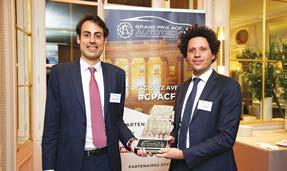
“We are honored to have won the award Grand Prix ACF AutoTech,” said Fabien Koutchekian, CEO of Genomines. “It was a great opportunity to pitch Genomines to influential experts and players in the automotive industry.”
Koutchekian said the company is very grateful to have received such personalized support before and after the event.
“This award means a lot to us, and above all, we are extremely pleased to see how the automotive industry is committed to supporting impactful solutions for the energy transition,” he added.
Diamfab was given The Prix Pionnier ACF Award, which recognizes the youngest startups at the seed funding stage. Diamfab specializes in diamond semiconductors designed for power electronics and quantum applications. The components are expected to help revolutionize the mobility industry by optimizing system costs, reducing weight, minimizing the carbon footprint and mitigating environmental impact.
because we want to make battery recycling more sustainable and enable a green energy transition,” said Linus Glowinski from Cylib. “Sustainability is in our core DNA and we’re beyond excited to receive such positive feedback and acknowledgment.”
Grand Prix ACF AutoTech was established 2017 as a joint venture between the Automobile Club de
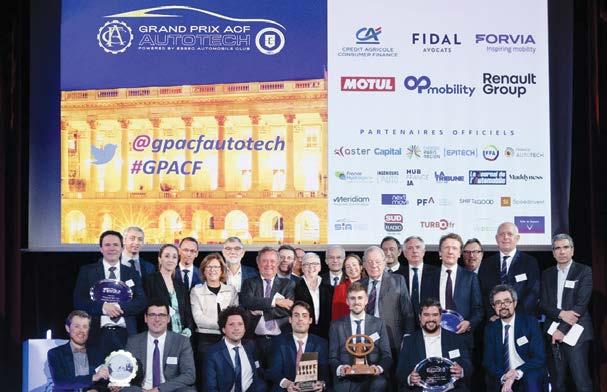
“We are deeply honored to receive this award from such a prestigious organization as the ACF,” said Ivan Llaurado, chief revenue officer and co-founder of Diamfab. “Participating in the contest has been an incredibly rewarding experience. Hearing Gilles Le Borgne, the Renault Group CTO, affirm that Diamfab has the potential to significantly impact the automobile industry was the highlight of the event. Beyond the recognition, which greatly motivates our team, we believe this award will accelerate the development of the next generation of power electronics.”
Llaurado said they are already scheduling meetings with key industry players, and the Prix Pionnier ACF award is undoubtedly a significant catalyst for the company’s growth. He encourages all automotiverelated start-ups to participate in the contest and all industry stakeholders to closely follow it to uncover new opportunities.
The Mention GPACF GreenTech Award, given to startups that have a positive impact on the environment, was received by Cylib, which has developed a holistic, eco-efficient process for recycling Lithium-Ion batteries.
“Winning the Mention GPACF GrennTech award means a lot to Cylib
“We cannot do everything internally because the spectrum of technology is too wide,” he said. “You cannot be a specialist in everything.”
Salessy, a contest judge, explained promising startups were selected that align with the industry’s expectations and shared some current trends.
“The first one is electrification of vehicles or carbon-neutral vehicles,” he noted. “When we talk about electrification, we are including hydrogen applications.”
He said that electrification covers the electrical powertrain, battery chemistry, energy efficiency of the engine, converters and the charging system, as well as the technologies associated with connectivity to simplify the user experience.
He said automakers are also focused on developing advanced driver-assistance systems (ADAS) centered around safety to help drivers better anticipate road situations.
In addition, Salessy said new technology based on artificial intelligence (AI) is being developed to provide drivers with a more personalized experience.
France and ESSEC Business School. Since then, the focus has been on propelling innovation amongst automotive industry entrepreneurs and promoting efficiency and sustainability.
In addition to a financial reward, winners receive an investment assessment, business coaching, legal support, potential investment capital and networking connections with corporate affiliates.
“Our goal is to leverage the expertise of some of the most wellknown companies in France to help establish developing startup companies,” said de Cabrol.
Mentor companies include Renault Group, Forvia, Plastic Omnium, Crédit Agricole, FIDAL and MOTUL.
“It’s a win-win situation because we bring them in and give them a lot of visibility and it’s also an opportunity to find the next disruptive type of technology that we might use in our vehicles,” said Jean-Francois Salessy, Renault’s vice president of vehicle advanced engineering and upstream technologies, who joined the company in 2022.
He said that many auto manufacturers, including Renault, take a horizontal approach and identify the best partnerships to develop vehicle technology.
Since the inception of the contest in 2018, de Cabrol said each of the finalists has seen proven success.
NODAR, based in Massachusetts, received the Grand Prix ACF AutoTech award in 2023 and Brad Rosen, NODAR’s COO and co-founder, was a contest judge this year.
Rosen said NODAR has been working on disruptive ideas focused on automated driving and parking since 2018, and believes many opportunities exist for startups in the automotive arena as software becomes a driving factor and business model shift.
“We’ve benefited greatly from winning this competition last year, including establishing meaningful partnerships with some of the sponsors,” said Rosen. “The Grand Prix was top notch and managed extremely well, from the communications and awareness to the level of competitors, quality of sponsors, and finally, the beautifully run event at the historic ACF facility.”
He said companies don’t have to be based in France or even Europe to participate and win and encourages other startups to learn about the 2025 competition, which will be accepting applications in October.
For more information, visit en.grandprixacfautotech.com.
catastrophe, exacerbated by a lack of understanding about the process. Insurance companies will now have to show their math — disclosing the current market value of the vehicle, the estimated cost to repair, the salvage value, and any other factors used in the calculation. We look forward to continuing to work with consumers and the auto body industry to monitor implementation and build on these reforms.”
An earlier version of the bill would have also required insurers to offer policyholders the option to be compensated for repairs that make
The United Auto Workers (UAW) and Ultium Cells have reached a historic tentative agreement at the Lordstown, OH, facility. The agreement, announced June 10, promises substantial wage increases and enhanced safety measures for UAW Local 1112 workers producing EV batteries for General Motors vehicles.
“Eighteen months ago, this company was on a low road path to poverty wages, unsafe conditions and a dark future for
“We were told at the beginning of bargaining that Ultium workers would never be allowed to join the UAW’s national agreement at GM,” said UAW Vice President Mike Booth . “Not only did we prove them wrong, but we did them one better, winning a major local agreement that sets the standard for the EV battery industry.”
The journey to this tentative agreement has been arduous for the workers at Ultium Cells.
this contract was no different. We want this agreement to become a cornerstone for current and future battery plants across the nation. First we planned. Then we took action. And now we have a tentative agreement to be proud of.”
“We were told at the beginning of bargaining that Ultium workers would never be allowed to join
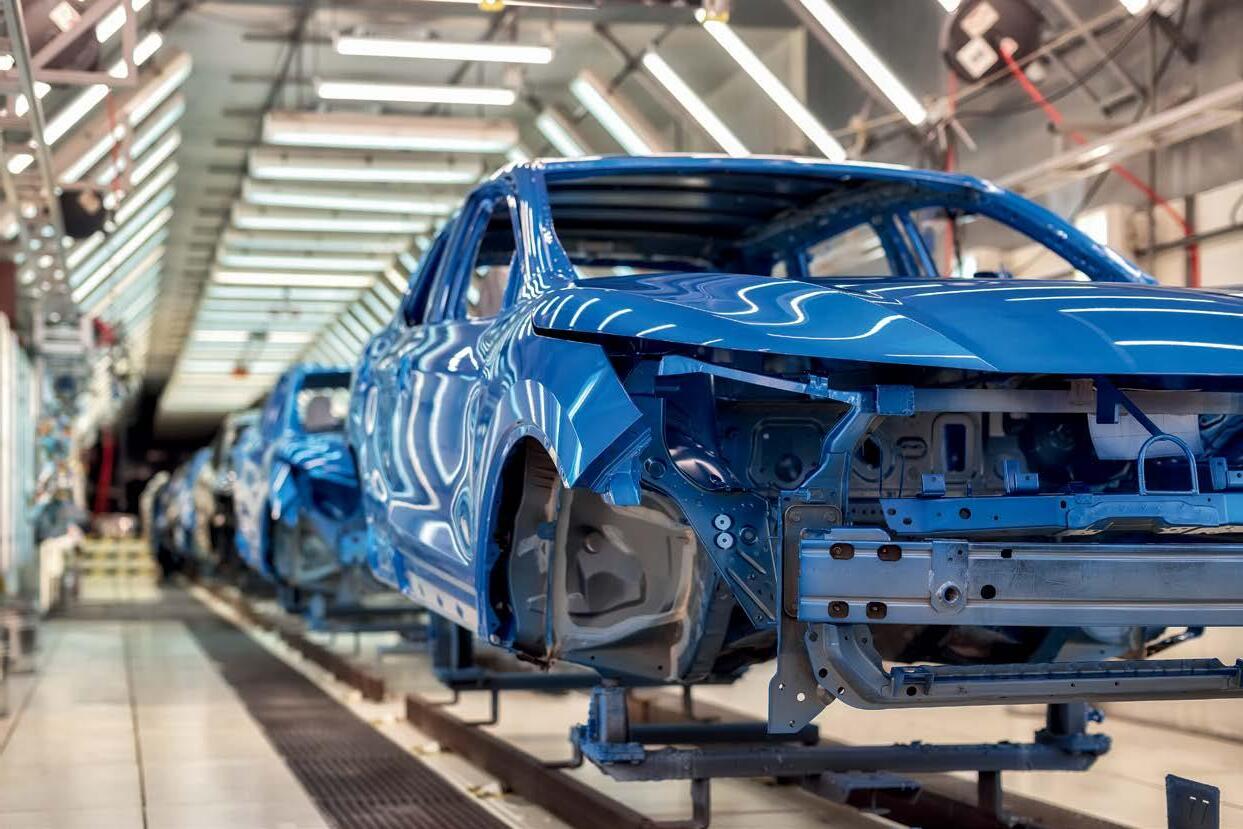
Fusor High Definition Plus sprayable sealers are innovative one-component seam sealers designed for the precise duplication of OEM beaded sealers, wheelhouse coatings and sound deadening materials.

Skins in 25 minutes or less
Option to paint immediately or up to 30 days after application
Reduces cycle time
Achieves a perfect match with OEM appearance
Equipment and tool suppliers, OEMs and other vendors gathered in Newport Beach, CA, in April for the Equipment and Tool Institute’s (ETI) annual ToolTech. The two-day event included presentations on industry trends, networking and the opportunity to meet one-on-one with OEM and aftermarket tool and equipment providers.
“ETI is committed to fostering collaboration between vehicle manufacturers and the providers of tools, equipment and service information,” said Brian Plott, ETI’s executive director. “Seeing the willingness of industry leaders to talk and understand each other’s needs, collaborate on new technologies, and really work together collectively on the direction of the industry makes it an exciting time for the industry.”
During the event, a significant milestone was announced: ETI is entering the European market and creating ETI EU, which will be headed by Winston Lee. Lee, managing director EU, is a long-time ETI member and strong participant.
“Many of our members are global companies, as are our OEM
partners,” noted Plott. This is a step in the direction of contributing to the growth of our membership and helping them clear the path for the industry for the long term.”
ETI also introduced its 2024-25 board members and named Bob Augustine, vp of sales and marketing for AAA Auto Glass & Electronics, president of the organization.
Since becoming involved with ETI in 2006, Augustine said the pace of technology is accelerating.
“We no longer have distinct vertical segments anymore because anyone who performs vehicle
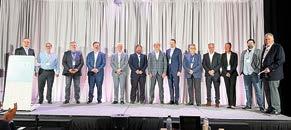
repair has to be service-ready on all aspects of the platform as soon as the vehicles are built,” he explained.
“OEM-approved tooling, training and service information are no longer a nice-to-have; they are requirements to properly complete a safe and complete repair for the motorist.”
On day one of the conference, Mike Spagnola, president and CEO of the Specialty Equipment Market Association (SEMA), provided an overview of SEMA. This included information about the SEMA Garage locations in Diamond Bar, CA, and Plymouth, MI.
Pete Bradley, head of international technical training at Hella-Gutmann in Germany, provided an international perspective on the automotive aftermarket industry. He shared insight on some of the challenges taking place regarding ADAS cybersecurity and data ownership.
Cybersecurity issues were shared by Kevin Tierney, vp of global cybersecurity for GM. Tierney discussed how the auto manufacturer is addressing cybersecurity issues and the importance of taking protective measures.
Augustine moderated an OEM panel that included David Stovall, Toyota; Ryan Hays, Ford, Terence Vance, Honda; Danny Uhls, Nissan; Bob Stewart, General Motors; Travis Taylor, Volkswagen/Audi; and Mike Porter, Hyundai.
Joshua Linton, Midtronics’ EV platform manager, talked about accurately testing and diagnosing EV
12-volt batteries. He explained that in a typical EV, a rectangular pack of individual lithium-ion batteries is located under the floor and powers the electric motor.
On day two, Dr. Shawn DuBravac shared insight about some of the forces defining the future of the auto sector. DuBravac said leaders must work on competing time horizons simultaneously.
Richard Ferguson, Toyota’s new markets manager, business development, fuel cells, shared information about fuel cell solutions. He discussed the Toyota Mirai, a fuel-cell electric vehicle (FCEV) that uses hydrogen gas rather than liquid gasoline.
Augustine then led a shop owners’ panel with Lucas Underwood, L&N Auto Repair and Changing the Industry Podcast; Gene Morill, Certified Automotive Specialists; Greg Buckley, Buckley’s Auto Care; and Lee Lizarraga, ABC Auto Care. The last presentation was given by Mark Seng, Predii’s vp of sales and business development, who discussed AI implications in the automotive service aftermarket.
For more information about ETI, visit www.etools.org.



After its 2022 study of blend refinish labor times, which led all three estimating systems to reexamine their 50% formulas and add more flexibility to their systems related to blending, the Society of Collision Repair Specialists (SCRS) said it will embark on a similar approach to the topic of structural set-up and measure.
“We often hear from our members, just as we did with blends, that the historic approach to set-up and measure doesn’t reflect what current requirements of modern-day vehicles and modern-day equipment require,” Aaron Schulenburg, executive director of SCRS, said at the association’s open board meeting this spring in Seattle. “We will perform a study that analyzes both of those tasks, and find a way to communicate back to the industry.
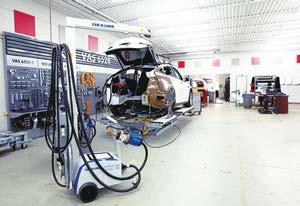
“I think a big difference between the blending project, where we had historical values established similarly by all three estimating systems, is that with the task of setting up a vehicle and measuring a vehicle, those times aren’t defined by any of the estimating systems,” Schulenburg said. “So we’ll be looking at it a little differently in how we produce our results. But I think it will have equal value to the collision repair centers out there who can then take that information and proceed forward.”
Returning to the blend issue, Schulenburg said SCRS has developed a document focused on addressing common questions about the changes in the CCC Intelligent Solutions estimating system related to its blend formula. For each of a dozen questions, the document includes a link to information from CCC or Motor Information Systems — which develops the database of labor times used in the CCC system — addressing the question.
“I’ve heard some people have
been challenged by someone saying, ‘Motor didn’t actually change anything,’ so we put that question in there,” Schulenburg said. “Did Motor Information Systems conduct research on the estimated work time development methodology for color blend adjacent panels? And there is a quote from Motor, saying throughout the first quarter of 2023, Motor reviewed information from multiple sources.”
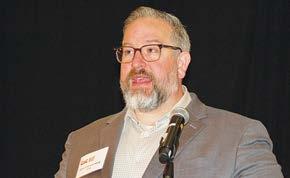
Did Motor intend for the absence of a defined blend time to default to its prior formula? “Motor removed the previously published color blend formulas after determining they may not reflect the many variations encountered with modern vehicle finishes and designs,” the document quotes from Motor’s published response to a Database Enhancement Gateway (DEG) inquiry. “[Because of] these variations, Motor does not intend to publish a list of included or excluded items specific to color blend.”
How does Motor define a judgment time following an on-thespot evaluation? “A judgment time would be the outcome reached when an estimator or appraiser considers the specifics of the vehicle and repair or refinish operation being evaluated to determine the estimated work time,” Motor wrote in a response to a DEG inquiry.
Speaking at the meeting, Jeff Wildman of BASF said the document could prove helpful given what he’s seen related to shops adjusting what they charge for blending.
“I’ve done a couple presentations on it, and a lot of the shops out there seem like they’re just looking for an ‘Easy’ button,” Wildman said. “The information you put together, Aaron, really helps explain it, and I think shops are starting to get it, but they’re afraid to ask for more than
50%. When we talk to shops and ask them what’s happening, what they’re doing, most shops just say, ‘Well, I’m just asking for 50%,’ but the shops that are trying to do more, that are leveraging the information, they’re getting paid for it. But you have to try.”
Wildman also said BASF in April had State Farm representatives in its training center, blending panels.
“They’d been asking about the blend study, and I told them, ‘I can’t tell you how long it takes. Come in and do it,’” Wildman said. “So we had three people from State Farm doing twostage and three-stage blends, getting a feel for it to understand what’s really involved. They were there for a full day, eight hours spraying paint. So we’ll see what the outcome is, but people are looking into it.”
“If you come across an error, an omission, or inaccurate data, you can reach out to us through the website.”
Like Motor and CCC, Audatex also removed its blend formula and changed its guidance to say blend times vary and require a vehicle-byvehicle evaluation. Mitchell allows a user to adjust the blend formula in its system but did not change its guidance related to the formula of 50% of full panel refinish time.
Also during the SCRS meeting, Danny Gredinberg, the administrator of DEG, reported that better than half of the more than 500 inquiries submitted to DEG in the first quarter of the year resulted in a change to one of the estimating system databases by Audatex, CCC Intelligent Solutions or Mitchell. Those combined changes, he said, based on inquiries related to omissions or inaccurate information in the estimating systems, added 233 body labor hours, 70 refinish labor hours, and about $4,900 in parts pricing to the systems.
“Again, this is just in the first three months of this year,” Gredinberg said, adding that more than 22,000 such inquiries have been submitted since the DEG’s inception more than 15 years ago.
Gredinberg highlighted some of the recent inquiries. One (#36440)
questioned CCC’s labor time to replace a quarter panel on a 2023 Nissan Rogue; after review, CCC increased the labor time from 18 hours to 23 hours. Just out of curiosity, Gredinberg said, he contacted Nissan and learned that the automaker had sold 549 of those quarter panels just in one year.
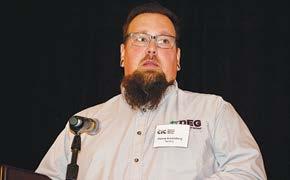
Another recent inquiry related to a Subaru Impreza quarter panel replacement caught Gredinberg’s eye, he said, because he’d submitted an inquiry on the same model of vehicle 11 years ago when working as an estimator. The time was increased back then, he said, and this year another five hours were added to the labor time in CCC. Subaru told him about 1,650 of the quarter panels have been sold since 2013. Inquiries sometimes result in more than just changes to the estimating databases, Gredinberg said. One inquiry (#35949) noted the Mitchell estimating system lacked a labor time for the full replacement of the uniside on the 2024 Chevrolet Trax. Gredinberg found General Motors had no published procedure for that operation, but the automaker developed one within about 10 days of being contacted. That procedure was submitted to Mitchell, who used it to establish a labor time of 23.9 hours — so the inquiry resulted in both an entry in the estimating database and a published OEM procedure.
“If you come across an error, an omission or inaccurate data, you can reach out to us through the website,” Gredinberg said, noting the DEG website also includes other tools like the P-pages or guides to the three major estimating systems, and many of the automakers’ electronic parts catalogs. “We’ve got to speak up. We’ve got to submit these inquiries. Because at the end of the day, we just want to get paid fairly for the work that we’re doing.”
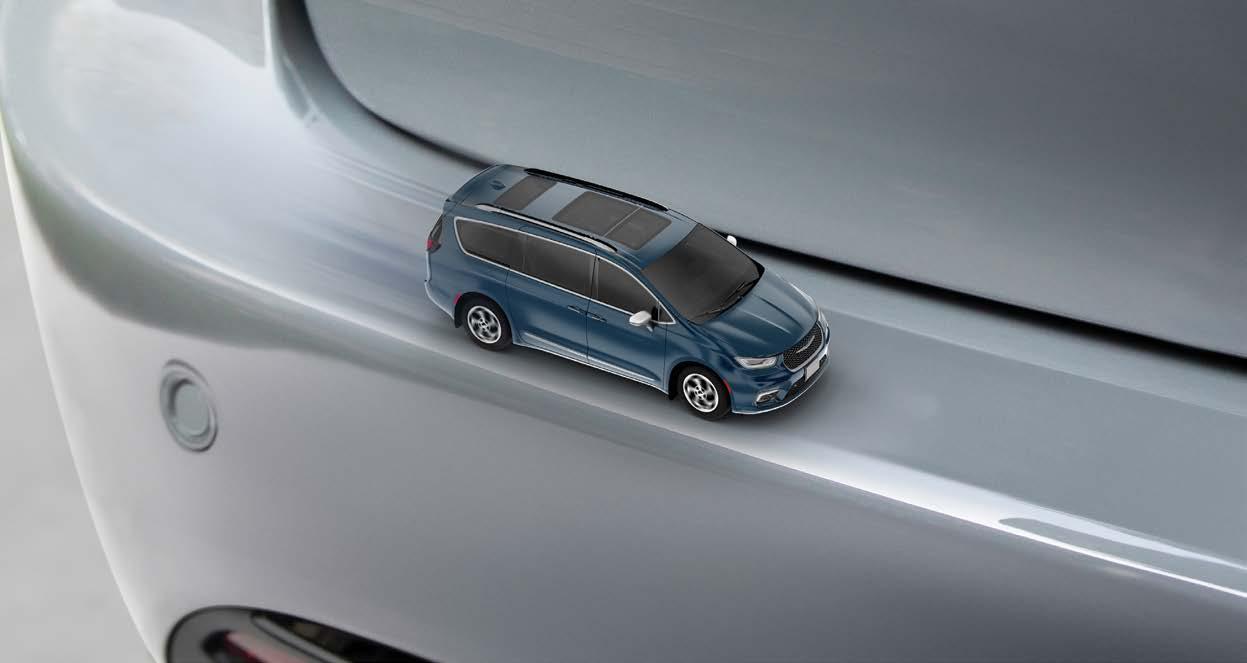
ILLINOIS
JACK PHELAN DODGE
5436 Dansher Road Countryside, IL 60525 (800) 643-6343 Call our stand alone warehouse!
RIVER FRONT CHRYSLER DODGE JEEP 200 Hansen Blvd. North Aurora, IL 60542 (630) 907-0300
INDIANA
EXPRESSWAY DODGE
5401 E. Virginia Street Evansville, IN 47715 (800) 800-1259 Fax: (812) 437-9590
KAHLO CHRYSLER DODGE JEEP RAM 9900 Pleasant Street Noblesville, IN 46060 (317) 773-6363 parts@hellokahlo.com
STEW HANSENS DODGE CITY 12103 Hickman Road Urbandale, IA 50323 (515) 331-2901
KANSAS
PARKS MOTORS
11987 SW US Highway 54 Augusta, KS 67010 (316) 775-4390
MICHIGAN
ZEIGLER CHRYSLER DODGE JEEP RAM ALFA ROMEO FIAT 4200 Parkway Place Dr SW Grandville, MI 49418 (800) 881-3097 (616) 532-4929
MINNESOTA
MILLS PARTS CENTER 2508 Airport Drive SW Willmar, MN 56201 (800) 247-1158
OHIO
CLASSIC CHRYSLER DODGE JEEP
6300 North Ridge Road Madison, OH 44057 (440) 417-1063 (877) 940-8670
KEN GANLEY CHRYSLER DODGE JEEP RAM 310 Broadway Avenue Bedford, OH 44146 (440) 232-4950
As EVs gain market share, auto body shops across the U.S. must consider if and how they will prepare for repairing them.
Kelly Logan, director of collision repair programs at EV maker Rivian, and Kris Burton, owner of Rosslyn Auto Body and a board member with the Society of Collision Repair Specialists (SCRS), stopped by Autobody News’ The Collision Vision podcast, hosted by Cole Strandberg, to share their insights on how body shops can take full advantage of the opportunities EV repair creates.
Strandberg asked Logan about the safety considerations involved in EV repair.
Logan said EV-specific training is critical to make sure technicians have the necessary skills and the information to be able to work on them safely. For instance, highvoltage gloves need to be checked regularly for pinholes, because an electrical short can jump through.
Rivian offers hands-on, instructorled training for technicians who will be working on the vehicles, and online training for everyone who works in a repair shop in any role. “If there’s a vehicle that has a battery pack out or has the front end tore

Logan said Rivian has a network of certified collision centers, but recently launched a new program to bring on third-party, independent service providers to work on the electric delivery vans it is building for Amazon.
Burton said his shop, which is located in Alexandria, VA, near Washington, D.C., started working on its Tesla certification in 2014. It now has that, as well as its Rivian certification.
“I think you’ve got to come into [repairing EVs] open minded, facility wise, tooling wise and then tech wise,” Burton said.
Logan, who has worked for two other EV startups before Rivian, including Tesla, said EV makers are looking for collision repair shops that are “open to growing with us, looking at training requirements and tooling requirements.” He said Rivian tries to ensure shops are only buying special tools they absolutely need to repair their vehicles.
to physically inspect it or do pressure checks to make sure there is no internal damage.
Strandberg asked Burton about how he made the decision to begin pursuing Tesla certification in 2014.
“It was an opportunity for us to be on the forefront, and especially in our region, here in the D.C. area,” Burton said. “There’s a lot of EVs on the road. It was really an opportunity for us to to help our business grow.”
Burton said new tooling is not just an upfront cost, it’s an ongoing one as well. For instance, certain welders have a specific lifespan. Training also requires an ongoing investment, including travel expenses to attend in-person classes, as vehicles continue to evolve.
Logan said he does not see ICE vehicles becoming extinct, at least not in his lifetime. It will be up to shops on an individual basis to decide which certifications make the most sense to pursue, but the need to specialize could also drive opportunities.
to take your business in the future,” Logan said. “There’s programs out there that are not as strenuous, and that’s OK. And then there’s programs like...Rivian. We have a lot of things to it. There’s standards, there’s tooling, there’s a lot of investment. There’s training commitments.
“I don’t think every certification, every OEM even fits our model. I don’t think you can be everything to anybody anymore.”
“So you can look at maybe dipping your toes into the water with with other programs, if it makes sense for your business,” Logan said. “Or you can just jump right in, like [Burton] has done in the past, and get involved with it.”
apart and there’s high voltage lines exposed, it’s really good just to have everybody in the building on the same page as far as safety,” Logan said.
Compared to ICE vehicles, EVs have much fewer moving parts, Logan said, but their high-voltage battery packs contain many modules, each holding thousands of individual battery cells. Repairers will never be asked by an OEM to fix a battery pack; if there’s an issue with it, it will be replaced. But OEMs do have different instructions for when and how to remove the pack to complete other procedures.
“In the future, as EVs become more mainstream, maybe you’ll have battery repair centers,” Logan said.
Logan said Rivian has a support team for its certified collision network, that looks at batteries in damaged vehicles on a case-by-case basis, to determine if dents or scratches on the case are allowable, or if the pack needs to be replaced. Sometimes that can be done by photos; other times, a technician from Rivian needs
“When you really get good at repairing one vehicle or a particular brand of vehicle, your whole shop gets comfortable. Your technicians get comfortable with how these vehicles are put together and how the repair procedures are laid out, and how how you write an accurate estimate. It really does help your overall business,” Logan said.
Burton said his shop mostly only fixes vehicles for which it has certifications now. “It’s five, six brands of cars that we repair,” he said. “And we’ve got it down pretty well to how to move forward with those.”
He also said he has five apprentices in his shop now, all between 18 and 20 years old, and if the shop had more space, it could probably bring in more.
“I think the the narrative that kids don’t want to do [collision repair] is incorrect,” he said. “I think a lot of kids do want to do this, but they want to be in a place where they’re supported and where they’re free to learn and where they can make mistakes and improve and grow.”
Logan said shops should research OEMs’ certification requirements to determine which ones make sense to pursue. Some won’t fit a shop’s particular business model.
“It’s looking at where do you want
“I don’t think every shop is for certifications,” Burton added. “I think you really need to pick. I don’t think every certification, every OEM even fits our model. I don’t think you can be everything to anybody anymore.”
Logan said Rivian has an online application for shops interested in becoming certified to work on their vehicles. As Rivian’s vehicle population has grown — doubling in the past two years — so too has interest in being able to fix them. The EV maker carefully considers which shops to work with, based on where their customers are located.
“We want to make sure that the shops in our programs are successful,” Logan said. “And so overloading the network with too many shops in markets can actually backfire where nobody’s getting a return on their investment.
“Sometimes we get shops that are frustrated; they really are excited. They want to be on the network,” Logan added. “We just want to make sure that they understand if you spend all this money and got brought on to the program, and you didn’t see any vehicles, then you’d be upset.”
Return on investment is key, Strandberg said, as there is a cost to getting certified that takes both time and money.
“Lastly, specialization,” Strandberg said. “That’s something both Kelly and Chris spent a ton of time on. If you want to make sure a certification offers you a good ROI, especially one for EVs, consider specializing if the market’s right. If your talent’s right.”
The adoption of Advanced Driver Assistance Systems (ADAS) has dramatically increased over the past decade, leading to significant improvements in vehicle safety and driving convenience. Popular features, including adaptive cruise control, lane assist, automatic braking, blind-spot detection, and collision avoidance, all rely on properly calibrated ADAS systems driven by many complex sensors.
There are several different types of sensors that are key to the operation of ADAS capabilities, including Radar, LiDAR, ultrasound/SONAR, and cameras, to name a few. All these sensors operate simultaneously, allowing a vehicle to perceive the surrounding environment. There are pros and cons for each type, so many manufacturers have determined that multiple systems need to be used to maximize safety. While LiDAR and camera-based sensing
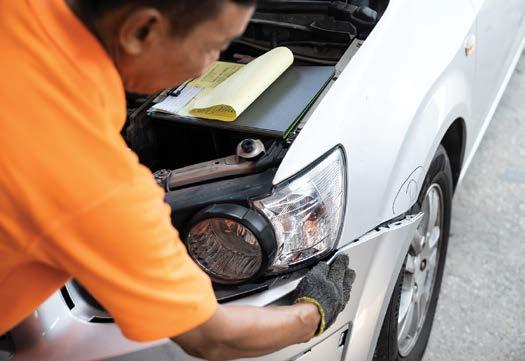
methods require a direct line-of-sight to objects and hazards on the road, Radar and ultrasonic sensors can be painted, or hidden behind painted fascia components to avoid the use of unsightly cutouts. The use of radar and ultrasonic sensors behind painted layers means that special care must be taken to avoid the use of materials that can degrade sensor performance. Radar-related repairs are especially critical, since the radar systems have a much larger detection range and operate while the vehicle is moving at high speeds, compared to ultrasonic sensors which are mainly used for parking assistance. Collision centers must be aware of Radar and ultrasonic sensors because any repair in the vicinity of the sensor can decrease system performance, or in some cases, disable the sensor.
In the case of bumper repair, the first step is to locate the OEM procedures to determine if there is a sensor near the repair. If there is a sensor present, each OEM has a specific procedure on what can
be done to that area. For instance, most OEMs do not allow plastic fillers to be used to repair a crack near a sensor, instead, it may be necessary to replace the entire bumper assembly. Additionally, the painter must ensure that they do not exceed the maximum film build allowed by the OEM. Once you have validated the film build, you will also need to confirm that the selected paint has been approved by the paint manufacturer and OEM for use over ADAS equipment. Some OEMs list specific colors that can interfere with the Radar sensor performance, and are not allowed to be applied over the factory color. Colors that can decrease Radar sensor performance are usually silvers, golds and other colors with high concentrations of aluminum. Some manufacturers will allow one additional paint repair, while others specify a maximum total film thickness. Therefore, thickness measurement must be carried out prior to working on the bumper, and again after paint application. Finally, all OEM-specified calibration procedures must be performed to ensure proper sensor operation before the vehicle is put back into service.
There are also some general rules about ADAS on bumpers.
1. Use RADAR approved formulas. Some colors have RADAR approved formulas that have been approved by the OEM. If a color has a radar formula, it must be used when painting a bumper during a repair. These formulas have very strict tinting rules as well. In general, you cannot increase the percentage of aluminum or decrease the amount of binder.
2. Keep to the standard number of coats of paint. Use proper sealer shade or Valueshade when possible, to reduce the amount of color needed for hiding.
3. Do not blend over the top of a sensor. Always carry the color to completely avoid or cover over the sensor. Do not stop in the middle of the sensor area.
4. Mask the inside of the bumper to prevent scratches which could deflect or interfere with the sensor.
The importance of checking the OEM procedures and following these general rules cannot be stressed enough to ensure the vehicles are repaired safely and accurately. perfect solution for modern collision centers.
A new report from Focus Advisors showed private equity firms have invested more than $9 billion in the collision repair industry in the last five months alone, despite interest rates that are significantly higher than even a year ago. Private equity now collectively manages more than $400 billion in assets within the industry.
One of those private equity firms is Kinderhook Industries, which in March announced it became the lead investor in Kaizen Collision Centers, in partnership with Jacob Tilzer and LNC Partners. Founded in 2013 by Tilzer and headquartered in Scottsdale, AZ, Kaizen has 48 locations across Arizona, Colorado, Southern California, Iowa, Nebraska and Nevada.
Kaizen is Kinderhook’s 30th automotive/light manufacturing platform investment. The firm’s portfolio also includes Repairify, parent company of asTech, and Continental Auto Parts, an aftermarket
equity firms see collision repair as an industry with a “tried and true strategy” and a strong outlook.
“Places where you’ve got real strong organic tailwinds, coupled with opportunities for M&A [mergers and acquisitions] are good for private equity interest,” Cifelli said.
Increasing severity and vehicle complexity are driving up the cost of repairs.
“Those will continue going up, so it will continue to be more and more expensive to repair, so you’ve got built-in inflation for the next few years at least,” Cifelli said.
Firms interested in investing in collision repair shops are looking for great cycle times and CSI scores. If a shop has a list of DRPs, that can prove its ability to operate in that world.
“PE is really focused on operations, and having those scores that are important to insurance companies be above the averages,” Cifelli said.
Geography is also key — some markets have more population growth than others.
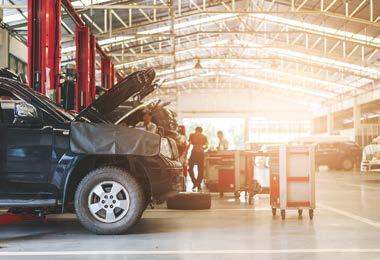
collision parts distribution company headquartered in New Jersey.
Paul Cifelli, managing director at Kinderhook, said the firm was approached in summer 2023 by its lending partner, Twin Brook Capital Partners, about investing in Kaizen. Kinderhook already had experience in the collision repair industry; it previously owned ProCare Collision, growing it from eight to 45 stores in four years before selling it in 2021 to Classic Collision.
Cifelli said Kinderhook was interested because Kaizen had a good footprint in markets with strong demographic growth and a lot of remaining opportunity for consolidation. In addition, Vince Brock, a Kinderhook executive who had been CEO of ProCare when the firm owned it, was looking to get back in the collision repair game.
In general, Cifelli said private
Focus Advisors said the private equity sponsors that have recently entered the industry or increased their positions have mostly replaced smaller firms. TPG Capital’s acquisition of Classic Collision introduced one of the world’s largest alternative investment funds to the industry.
“I would tell someone starting a [collision repair] business to go somewhere like Texas or Florida, places people are moving to,” Cifelli said. “That leads to congestion and traffic, which ultimately leads to collisions.”
In Focus Advisors’ report, it said of the $9 billion invested in the last several months, the biggest chunk was $4.6 billion by Caliber Collision, which issued new debt to refinance existing debt and fund a significant dividend for current shareholders.
Crash Champions also refinanced a significant piece of its debt and brought in an additional equity investment, which it is using for more acquisitions.
The original private equity sponsors of VIVE Collision, Garnett Station Partners, sold to a larger private equity firm, Greenbriar Equity Group. Similarly, Center Oak Partners, original private equity sponsor of CollisionRight, sold the company to Summit Partners, a much larger private equity firm.
Classic Collision, after less than five years with New Mountain Capital, announced a recapitalization with new sponsor TPG Capital, the private equity arm of the $220 billion global asset management firm TPG.
The Investors
Large firms see an opportunity to accelerate their growth as the availability and cost of their capital vastly exceeds smaller players and independent shops, Focus Advisors explained. Another reason is that increased revenues — driven by higher labor rates and calibration — have positively impacted EBITDA margins, making them more attractive to lenders and new investors. And there’s also the ongoing attractiveness of arbitraging acquisitions. Buying strong single shops and small MSOs at five to seven times EBITDA while raising capital at valuations of 12 to 14 times allows this new capital to effectively leverage their superior capital into faster growth.
Early private equity investors take more risks when they acquire platforms and then add more MSOs and single shops. They are supporting management teams that may not have proven themselves in operating at a much larger scale or buying and integrating multiple targets in a shorter span of time. The playbook for these earlier investors is pretty much the same with a few variations.
As early investors succeed in launching platforms, their acquirers
“Places where you’ve got real strong organic tailwinds, coupled with opportunities for M&A are good for private equity interest.”
PAUL CIFELLI KINDERHOOK INDUSTRIES
are buying with expectations the risks have been reduced. The predictability of cash flows has increased. The management teams are more proven. The costs of acquisitions and new locations are more stable and the direction of consolidation is more clear. And the very large private equity firms are able to write much larger checks — in fact, they need to write larger checks given the size of their funds.
Focus Advisors said it tracks more than 120 private equity firms that have examined the collision repair industry, and its team has had conversations with more than 100 of them over the past 12 months. Some are already well-informed; others are rapidly coming down the learning curve. Successful growth and exits by other PE firms are driving much of the interest.
For many of these prospective investors, the nuances of the industry often surprise them. There are substantially different challenges in collision repair from the more conventional strategies that have worked so well in other industries. Among those challenges is the fact third-party intermediaries — insurance companies — heavily impact the flows of business through DRPs. In addition, the skill sets needed to create profits reside in a technical workforce that has been in short supply for a generation.
With more than 80 MSOs with five or more shops that Focus Advisors has identified in its proprietary database, there is no shortage of candidate platform targets, depending upon the appetite of PE investors. While there are relatively few $30 million revenue platforms, there are many in the $15 million+ range. The true scarcity is management teams that are capable of rapid unit growth and attracting the skilled technicians required to staff their platforms.
Focus Advisors offered the following conclusions to its report:
More private equity firms will make initial investments. Focus Advisors expects the industry will see many new private equity firms entering the market in the next five years. Some will invest to build and flip. Others will buy and build for the longer term.
Independent MSOs will find attractive partners. Independent MSOs with strong management teams will continue to find willing capital partners at attractive values. Targets with a stable and growing base of technicians will attract more attention and higher values.
Exit opportunities with larger sponsors will increase. Welldeveloped private equity-sponsored platforms will continue to find large acquirers, either through consolidators growing by merger or very large private equity firms seeking to buy out early private equity investors.
Scott VanHulle, manager of I-CAR’s Repairability Technical Support and OEM Technical Relations, thinks the type of laser welding automakers use in assembly factories may make its way into collision repair shops and could be “a game changer” in the industry. One reason: improved affordability of the equipment.
“You’re
to
that
into an extremely small, tight area.”SCOTT VANHULLE
“A lot of this equipment has finally come down [in price] to be basically on par with a lot of the traditional [welding] equipment we have now, where not too many years ago it would’ve been double or triple what that equipment is today,” VanHulle said in a presentation on the technology at the Collision Industry Conference (CIC) held in Seattle. Unlike traditional welding, which
uses electrons to heat the material, laser welding involves photons, he said.
“You’re using mirrors and lenses to focus that laser beam into an extremely small, tight area,” VanHulle said. “It’s an intense heat in that area, but it’s an extremely small area. And it can pretty much weld everything: steel, stainless steel, aluminum, copper, brass, nickel alloys, dissimilar metals, even different kinds of plastic. There is even some talk about certain kinds of ceramics that can be laser welded.”
Because it doesn’t require a filler wire, it doesn’t introduce different alloys into the weld. The speed and very small heat effect zone are two of other advantages of laser welding.
“And you only need one-sided access,” Van Hulle said. “So if we had a quarter panel, where normally we’d have to plug weld it because we don’t have access, now all of a sudden we could basically do something similar to what the factory did, like a spot weld, despite only having one-sided access.”
VanHulle, however, also pointed to some of the potential challenges with laser welding. If a technician drops a MIG welding gun, swapping out a contact tip isn’t a big expense,
VanHulle said.
“With laser welding, that gun that looks like a traditional MIG welding gun has mirrors and lenses in it that can get smudged or damaged. It’s not a quick swap out of a contact tip,” he said. “You’ve kind of damaged a very expensive part of that tool.”
Laser welding also involves some of the same kinds of hazards as traditional welding, including fumes.
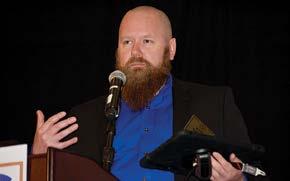
The personal protection equipment required may look similar, VanHulle said, but a different type of welding helmet is required.
“The laser can penetrate a traditional welding helmet, can actually get through it,” he said. “So
if you’re welding and you’re getting reflection off of something, it could actually burn a hole in the helmet.”
Specialty safety glasses are needed as well to protect from more than just sparks and debris.
“If the laser reflects off something and it hits your eye, it’s not like welders flash that feels like you have sand behind your eyes but will eventually get better,” he said. “This does permanent, irreversible damage to your eyes if you’re not wearing safety glasses that are rated for it.”
That’s one of the reasons when laser welding is done during the vehicle manufacturing process, the car moves into an area that is then closed off during welding so no one is potentially exposed.
“We may have to have something like the aluminum clean rooms if we’re laser welding, that can be locked off so other staff can’t walk into that area,” VanHulle said.
These challenges aside, VanHulle said, the laser welding process has a “substantially lower” learning curve with fewer possible user errors.
“I’m not saying we’re going to start laser welding tomorrow,” VanHulle said. “But it’s something we’re definitely going to have to keep an eye on in the coming years.”

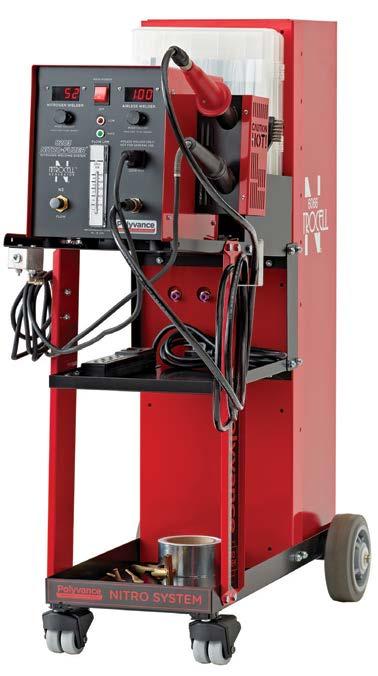
As the rise of emerging technologies collide with the collision repair industry’s talent shortage, two experts from I-CAR — Bud Center, director of technical products and curriculum, and Scott Kaboos, principal OEM technical lead and subject matter expert — visited The Collision Vision podcast, driven by Autobody News and hosted by Cole Strandberg, to discuss where the industry is today, the requirements and ROI for shops looking to invest for the future and what that future looks like.
Center said the increasing relevance of Advanced Driver Assistance Systems (ADAS), electric vehicles (EVs) and the use of mixed materials in vehicle construction are top of mind for collision repairers.
“We’ve got EVs and all the electrical side that one of your traditional collision repair techs would run from and say, ‘Send it over to the mechanic,’ or ‘Send it to the dealer,’ when it’s electrical,” Center said. “But now with all these EVs, we don’t have any choice. We have to develop that skill set on the collision side and really start jumping into it.”
EVs also use mixed materials to reduce weight, which comes with unique joining methods that also require new training, Center said.
Kaboos talked about the innovative tools and materials that have recently entered the market.
“First thing came to my mind was glue pulling,” Kaboos said. “We’re seeing some phenomenal glue pulling equipment that’s actually being used for structural repairs.”
Kaboos said ADAS calibration equipment is also making strides, as more and more OEMs endorse or allow the use of some aftermarket equipment. He said there are now more fixture jig attachments and specialized jigs for pulling, straightening and structural attachments.
Center said I-CAR is exploring 3D printing at its Chicago Technical Center, as some parts manufacturers are considering enabling the ability for shops to print some of their own parts, like brackets and clips.
“We’re starting to look at what does it take to get into that space? Is it really a viable option in the collision repair space or not? What type of materials do you need to use for that type of printing?” Center said. “What are the things you need to be aware of? You know, the pitfalls, so that you don’t start printing parts that fail.”
Kaboos said I-CAR purchased a laser welder for its Appleton Technical Center in Wisconsin to see if that technology — which automakers
makes sense down the road, consider investing in the tools and training to expand to other OEMs.
“I think a good idea is to specialize,” Kaboos said. “I think we’re going to see more of that anyway, where not everybody’s going to fix every car that comes in the door. And I think that’s a good thing.”
Center said technicians need to learn how to work on EVs safely. Batteries
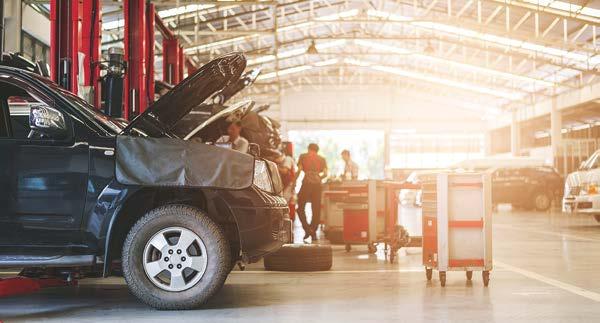
Credit: Shutterstock
already use to build cars — could also be viable for collision repairers.
Kaboos said shops need to consider if they will do ADAS calibrations or EV repairs in-house, and if so, which manufacturers they’re equipped and trained to handle. Many shops don’t have the space and conditions to perform static ADAS calibrations in-house, Kaboos said, and a lot of dealerships don’t either, which has led to a rise in independent calibration centers.
Strandberg asked how business owners should look at a cost-benefit analysis when considering investing in new repair technologies.
Kaboos said shops should first consider their car count, and what type of cars they’re working on — is there a higher volume of any particular OEM’s vehicles?
Then shops should consider how much space they have available to possibly do ADAS calibrations inhouse.
“[Doing calibrations in-house] is not a requirement. It’s not a mandate,” Kaboos said. “It’s an opportunity where you need to make a smart business decision. You need to weigh the cost.”
Kaboos said it could be a good idea for a shop to invest in being able to calibrate the top two or three OEMs’ vehicles it works on, and, if it
He also touched on I-CAR’s Repairability Technical Support portal, which has an app that allows users to search by make and model for any repair information I-CAR has available, and the Collision Careers program, which I-CAR established to promote collision repair as a career option and attract new technicians.
Looking Into the Future
Strandberg asked Center and Kaboos what future technologies they foresee becoming an integral part of the collision repair business.
Kaboos said repairers are already seeing new OEM procedures, including ones to refinish bumper cover areas where ADAS sensors and cameras are located. He said rivet bonding, including self piercing rivets and low form rivets, will become more common.
“We’re seeing more manufacturers going to the gigacasting or mega casting method of assembly,” Kaboos said. “It’s a lot more cost effective for them to build a vehicle that way. So I think that’s going to be our future 10 years down the road, where we’re going to see a lot more of that.”
in a collision-damaged EV need to be checked periodically throughout the repair process, as they can suffer a “concussion.”
“In sports, you bang your head, you get a concussion; the battery reacts the same way,” Center said. “So something that is fine today may not be OK tomorrow.”
Kaboos said technicians also need to be aware of how many seemingly simple repair procedures can require recalibrations. If those aren’t complete, ADAS features may not work properly, which could cause a crash.
He said he also sees a skills gap in welding and other joining techniques, which can also lead to safety issues in a repaired car.
“We’re seeing that in MIG welding, MIG brazing, squeeze type resistance, spot welding, all of those disciplines,” Kaboos said. “And it’s compounded by the fact that the vehicle manufacturers are building the car with high strength steel, ultra high strength steel and then mixed materials. Now we’re seeing multiple attachment methods being used on just one simple part.”
Center said I-CAR offers a lot of training — both online and in-person — for ADAS calibrations, EV repair and mixed joining methods.
Kaboos said that will also possibly lead to more total losses, if the castings cannot be repaired. If they can, it will be a much more intrusive repair.
Strandberg asked what advice Center and Kaboos would give a collision repair shop owner.
Center said his first suggestion would be to implement a learning culture, if a shop doesn’t already have one, and to take advantage of resources like I-CAR’s Repairability Technical Support portal
He also suggested engaging with local vocational programs and career fairs to meet young people interested in a career in the industry, and to get involved with trade associations like the Collision Industry Conference.
Kaboos said the evolving repair methods are “the cool thing about this industry.”
“I was fixing my first car back in the ‘80s, and I look back at how I fix that car and it’s almost embarrassing,” Kaboos said. “We would never think of doing that anymore. But it was the norm back then and it was acceptable.
“If you stop learning, you’re going backwards, because the cars are moving forward. The technology is moving forward, the manufacturers are moving forward,” he added.
“There’s just no way tribal knowledge is going to keep up. It just doesn’t work anymore.”
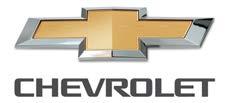
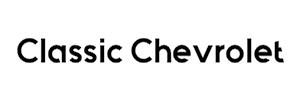






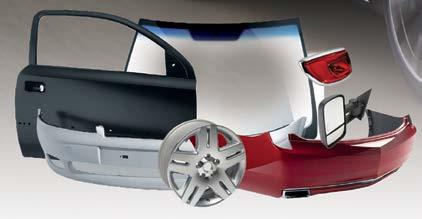



Unlock savings and precision fit with genuine parts
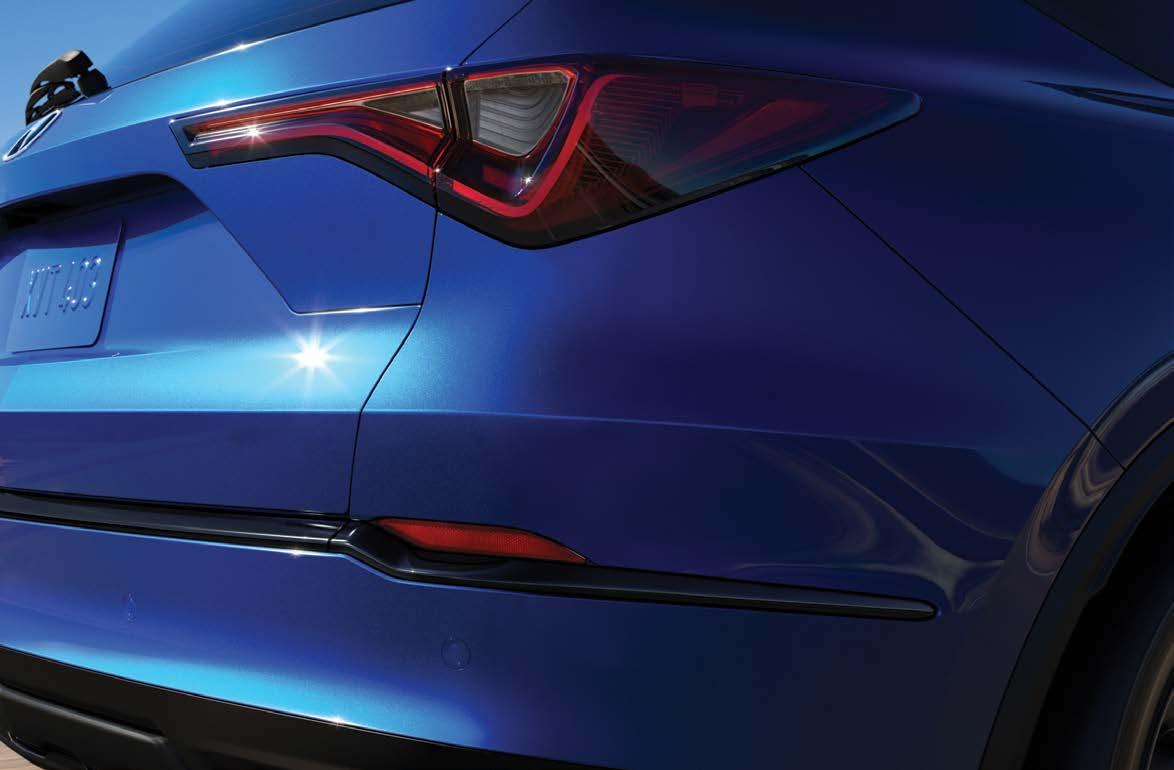
• Save time and money: reduce returns by up to 16%
• Faster ordering process
• More accurate orders
• Easier invoice processing
• Live information
• Seamless fit
• Competitive pricing
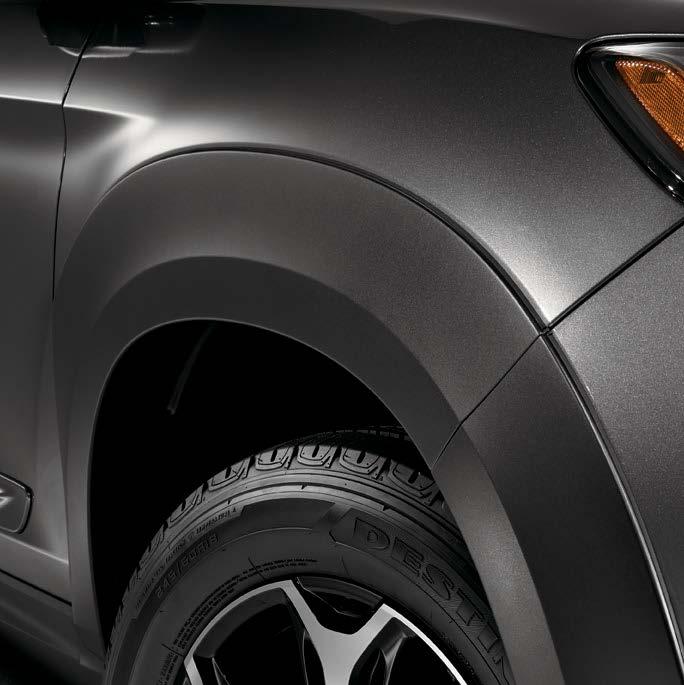
Honda of Lisle Lisle
866-874-6632
630-437-5299
Dept� Hours: M-F 7-5 WholesaleParts@HondaofLisle�com
INDIANA
Bob Rohrman Honda
Lafayette 765-588-9984
765-448-1000
Dept Hours: M-F 7:30-5:30; Sat 8-3
Brho partsmgr@rohrman com
Suburban Honda
Farmington Hills
248-427-7996
Dept Hours: M, Thu 7-8; Tue, W, F 7-6; Sat 8-3 nowiesny@suburbancollection com
Victory Honda
Plymouth
800-824-4646
734-453-3600
Dept� Hours: M-F 7:30-7; Sat 8-4 Robert rosenau@victorytoyota com
McGrath Acura of Morton Grove
Morton Grove
847-470-2308
Dept Hours: M-F 7-7; Sat 7-4 acparts@mcgrathag com
Jay Wolfe Acura of Overland Park
Overland Park
913-648-2287
Dept Hours: M-F 7-5; Sat 8-4 wozburn@jaywolfe com
Ziegler Honda
Kalamazoo
855-513-4477
269-585-5812
Dept� Hours: M-F 8-6; Sat 8-2 glenloubsky@ziegler�com
Brookdale Honda
Brooklyn Center
800-899-8900
763-331-6880
Dept Hours: M-Thu 7-9; F 7-6; Sat 8-6 parts@lutherbrookdalehonda com
Luther Hopkins Honda
Hopkins 800-328-6016
952-908-8585
Dept Hours: M-F 7-6; Sat 8-4 parts@hopkinshonda com
Richfield-Bloomington Honda Richfield 800-328-2703
612-866-8197
Dept� Hours: M-Thu 6:30-7; F 6:30-6; Sat 6:30-5 parts@rbhonda�com
Acura of Troy
Troy
800-935-0923
248-643-0900
Dept Hours: M-F 8-6
parts286@acuraoftroy com
parts287@acuraoftroy com
Luther Bloomington Acura
Bloomington 800-451-5078
952-887-0600
Dept Hours: M 6:30-6; Tue-F 6:30-9; Sat 8-4
parts@bloomingtonacura com
Bommarito Honda Hazelwood 800-731-8270 314-731-8270
Dept� Hours: M-Sat 7-6 cmelvin@bommarito�net
Ed Napleton Honda St Peters 800-875-4190 636-928-4400
Dept Hours: M-F 7-6; Sat 7-5 gethondaparts@napleton com
Columbia Honda
Columbia 573-818-3650
Dept� Hours: M-F 8-5:30; Sat 8-4 gropp@columbiahonda com
Honda of Tiffany Springs Kansas City 816-452-3221
Dept Hours: M-Fri 7-6; Sat 7-2 parts@hondats com
Superior Honda Omaha Omaha 402-408-1100
Dept Hours: M-F 7-5:30; Sat 7-5
Columbia Acura
Cincinnati
844-677-4902
513-530-0698
Dept Hours: M-F 8-5:30; Sat 8-12 columbiaparts@email com
Jay Honda Bedford 800-509-9057 440-786-3363
Dept� Hours: M-F 7:30-6; Sat 8-4 jayhondaparts@gmail�com
overestimations and the subsequent need for manufacturers to adjust production strategies. Challenges remain, particularly the higher cost of EVs compared to their combustion engine counterparts and the limited availability of affordable options below the $27,000 mark in Western markets. Additionally, the development and maintenance of charging infrastructure are critical to consumer adoption.
Looking forward, the demand for EVs is expected to remain strong, driven by impending bans on combustion engines and the ongoing need for cleaner transportation options. The IDTechEx report forecasts global electric car sales to exceed 50 million by 2035, up from more than 18 million in 2024.
General Motors, for instance, is revising its EV production targets for 2024, reducing its goal from an initial range of 200,000 to 300,000 units to 200,000 to 250,000 units, as reported by the Detroit Free Press.
GM CFO Paul Jacobson announced the adjustment during the Deutsche Bank Global Automotive
Industry Conference, emphasizing the company still aims to achieve variable profit in the EV segment by the end of the year. “We think we can still do that in, probably Q4 more than the second half,” Jacobson said.
Jacobson said the adjustment is “100% demand-driven,” despite overcoming previous supplyside challenges such as battery module issues. He noted GM sold approximately 9,500 EVs in May. The revised production targets are part of a cautious approach to avoid excess inventory and deep discounting, aligning production with market demand.
Additionally, GM is investing $850 million in its self-driving car subsidiary, Cruise, to support its relaunch.
Jacobson also reported GM ended the first quarter with a healthy 63 days of inventory, slightly reduced to 59 days by the end of May. The automaker anticipates a robust second quarter, projecting performance that will surpass the first quarter’s adjusted pre-tax income of nearly $4 billion.
Ford announced June 13 it is ending its “EV-certified” dealership program, which required significant financial investments from dealers, in response to slower-than-anticipated growth in
the electric vehicle (EV) market.
The program, launched in September 2022, required dealers to invest between $500,000 and $1.2 million to sell and service EVs. Initially, Ford had set a June 30 deadline for dealers to install Level 2 EV charging stations.
However, despite initial optimism and high demand for all-electric vehicles, sales have not met expectations. Ford’s dealership investment requirements were relaxed last November, reducing the number of mandatory Level 2 chargers and removing a future obligation for Level 3 fast chargers by 2026. Then, more recently, the automaker said it was temporarily suspending the requirements as it recalibrated its strategy.
“The world has changed,” said Marin Gjaja, COO of Ford’s Model E electric vehicle business, during a media briefing June 13. “The growth has slowed down.”
The Model E Dealership Program included about half of Ford’s 2,800 U.S. dealers but faced resistance and lawsuits from some participants due to the high investment requirements. In light of the changing market conditions and feedback from dealers, Ford has decided to “sunset” the program.
Instead, Ford will now open EV
sales and service opportunities to all of its dealers, aiming to boost sales of its all-electric cars and trucks. Dealers will still need to invest in charging infrastructure, training, and other EVrelated expenses, but the required investments will be significantly lower than those mandated by the previous program.
“It allows us to open EV sales and service to more dealers,” Gjaja said. “We think it’s going to help us grow our sales.”
Gjaja noted the initial investment estimates for the program were high, with participating dealers investing about $600,000 on average. By reducing the financial burden on dealers, Ford hopes to make EV sales more accessible and increase overall market penetration.
Ford also delayed the launch of a new three-row all-electric SUV by two years and reduced training requirements for dealership employees.
Nissan Motor Co. is also reshaping its approach to EVs in the U.S., prioritizing crossover SUVs over sedans in response to consumer preferences, as first reported by Automotive News. The Japanese automaker announced the adjustment of its EV lineup to better align with current

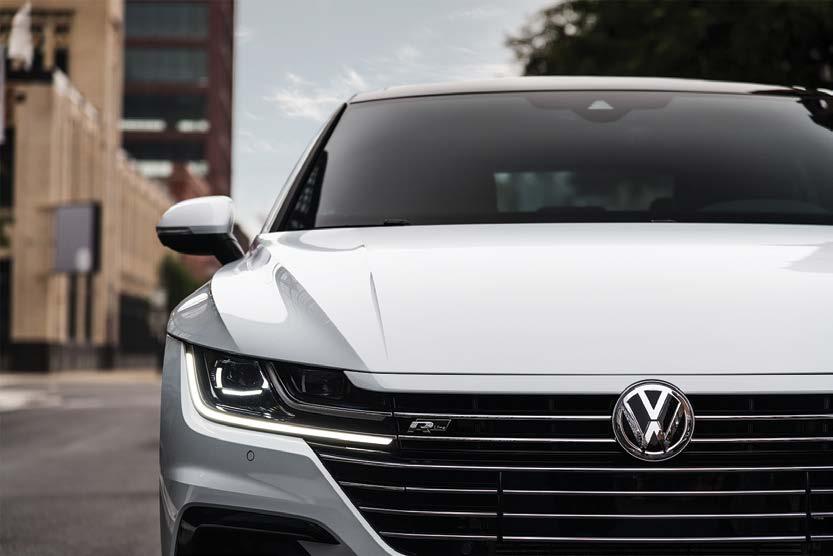

Hours: M 7:30-7 T-F 7:30-6 Sat 8-4
25580 Lorain Road North Olmsted, OH 44070
jim.j@ganleywestside.com www.kenganleyvwnortholmsted.com
Extensive Inventory of Genuine Volkswagen Parts Updated Daily
Team of Knowledgeable Wholesale Parts “ Professionals Ready to Help You
Delivery area counties: Cuyahoga, Lake, Geauga, Huron, Erie, Medina, Sandusky, Ottawa, Summit and Lorain
Fast Free Same Day, Next Day and Hot-shot Deliveries
Online ordering through
market demands, introducing five new models while pausing the development of two battery-powered sedans.
The announcement is part of Nissan’s broader effort to adapt to a softer-than-expected demand for EVs. “We are adjusting the timeline for the introduction of these five new models to ensure we bring the vehicles to the market at the right time,” a company spokesperson explained.
The revised lineup includes several battery-powered crossover SUVs, which are expected to roll out more swiftly than the planned sedans. Nissan’s manufacturing facility in Canton, MS, will play a crucial role in supporting the production of these next-generation vehicles.
The announcement is a modification of Nissan’s March plans, which aimed to accelerate the EV transition with seven new models by 2026 and establish a robust EV manufacturing hub in the U.S. However, the current shift in strategy indicates a more cautious approach in a market that has shown a lukewarm reception to electric vehicles compared to hybrids and traditional gas-powered models.
Access to Tesla’s Supercharger
network for several brands adopting the North American Charging Standard (NACS) has been delayed due to recent layoffs at Tesla.
General Motors, Polestar and Volvo were poised to gain access to Tesla’s extensive Supercharger network in North America, which includes 15,000 stalls. This expansion was expected to significantly enhance charging availability for EV drivers across the U.S. and Canada. However, Tesla’s decision to lay off numerous Supercharger team members, including Senior Director of Charging Infrastructure Rebecca Tinucci, impacted this timeline.
A Polestar representative stated their timeline “had been adjusted to later this summer.” Similarly, General Motors has delayed the anticipated purchase of its NACS adapter, which is essential for their EVs to connect to Tesla Superchargers.
Ford and GM executives presented divergent strategies for hybrid vehicles at a recent industry conference, as reported by Reuters.
Ford CEO Jim Farley argued hybrids should not be seen merely as a transitional technology on the path to full electrification. “We should stop talking about it as transitional
technology,” Farley said. “Many of our hybrids in the U.S. are now more profitable than their non-hybrid equivalent.”
Farley emphasized the profitability and relevance of hybrid vehicles, noting that extended-range hybrids are vital for the industry’s future. He mentioned Ford’s plans to quadruple hybrid sales over the next several years and acknowledged the company’s recent adjustments to its EV investment strategy. This includes pulling back on some EV investments and delaying production in Canada and the U.S.
Conversely, GM CEO Mary Barra views hybrids as a temporary solution, with the ultimate goal being a fully electric fleet. “It’s not the end game because it’s not zero emission,” Barra said. She added GM plans to introduce plug-in hybrids by 2027 to meet regulatory requirements but is primarily focused on advancing EV technology.
Ford is balancing its investments between hybrid and electric technologies, aiming for profitability in the hybrid segment while refining its EV strategy. Farley also expressed a belief that EVs should not rely on subsidies and that automakers must quickly achieve profitable production of battery-powered models.
In contrast, GM is doubling down

on its commitment to EVs, seeking to maintain competitiveness against Chinese automakers, who Barra acknowledges as formidable rivals. “I take the Chinese competitors, especially the top ones, very seriously. We’ve got to continue to take cost out so we can compete successfully,” Barra said.
Kia EV9 Debuts in Georgia as U.S. EV Sales Surge Kia, on the other hand, announced it has begun production of its first allelectric three-row SUV, the EV9, at its assembly plant in West Point, GA.
The 2025 Kia EV9 has already garnered multiple accolades, including the prestigious “Best of the Best” Red Dot award in April 2024 for the Cars and Motorcycle category, and several “Best in Class” titles from the Texas Auto Writers Association, including Performance SUV, mid-size CUV, and electric vehicle.
The Kia EV9 contributed heavily to the automaker’s 151% increase in EV sales in the U.S., said Eric Watson, vice president of sales operations at Kia America.
“Through Plan S, Kia is poised to be a leader in the e-mobility sector for years to come,” said SeungKyu (Sean) Yoon, president and CEO of Kia North America and Kia America. “EV9 will be in excellent hands with


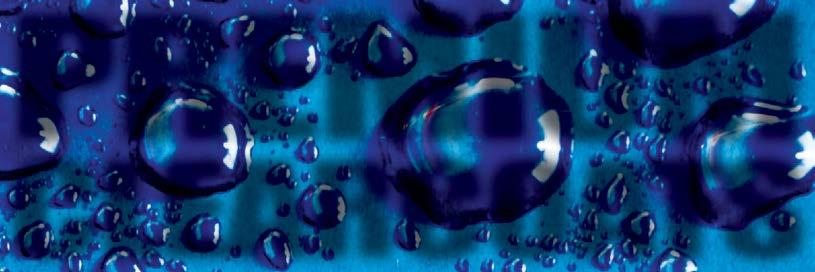




















the team members at Kia Georgia, and their track record for assembling award-winning, world-renowned products speaks for itself.”
Rivian decided to halt work on its second manufacturing facility in Georgia, but announced it will use $827 million in incentives from Illinois to bolster production capacity at its existing plant in Normal.
Originally intending to begin producing its forthcoming R2 vehicles in Georgia, Rivian said it will save $2.25 billion on capital expenditures, product development investment and supplier sourcing opportunities by producing it in Illinois to start. It will also be to launch the R2 earlier.
The incentives package, spanning 30 years, predominantly comprises tax benefits under the Reimagining Energy and Vehicles in Illinois program, along with an additional $75 million in capital funding under a separate state initiative.
According to a statement from the governor’s office, Rivian intends to invest $1.5 billion to elevate its plant’s capacity in Normal to 215,000 units annually from the current 150,000. This expansion project is projected to generate over
550 jobs within the next five years, a welcome development for the local economy.
Rivian also announced the second generation of its flagship vehicles, the R1S SUV and R1T pickup, featuring substantial improvements in power, performance and technology.
The second-generation R1 platform offers new tri- and quadmotor configurations, and new battery packs offering up to an estimated 420 miles of range.
Significant advancements in the new R1 vehicles include a redesigned electrical architecture, which reduces the number of electronic control units (ECUs) from 17 to seven, and an entirely new autonomy system called the Rivian Autonomy Platform. This system enhances vehicle capabilities with 11 cameras, five radars and AI prediction technology, offering features like high-resolution camera Blind Spot Monitoring and Highway Assist as standard.
Starting at $75,900 for the R1S and $69,900 for the R1T, the vehicles are now available for order on Rivian’s website.

Kentucky enacted a new auto glass industry law, effectively ending the assignment of benefits while also prohibiting promotional incentives like rebates or gift cards in insurance claims. This legislation, signed into law by Gov. Andy Beshear in April, closely aligns with similar legal standards established in Florida last year.
The law mandates a new operational framework for auto glass service providers. Prior to initiating any repair or replacement jobs, glass shops are now required to secure either an insurance claim number or a customer’s waiver of insurance. This regulation is part of a broader effort to standardize practices and ensure transparency within the industry.
Under the new regulation, shops must also inform customers about the presence and potential recalibration needs of ADAS in vehicles, a critical step given the complexity and safety implications of these systems. Furthermore, the law enforces a straightforward billing


practice, requiring glass shops to provide detailed invoices that include an estimate of fees and a clear declaration of the shop’s standard charges. This is intended to prevent overcharging by stipulating that fees must align with what is “reasonable and customarily charged” in Kentucky.
The legislation continues to support consumer choice, explicitly allowing customers to select their preferred glass services shop. It also permits insurers to maintain a network of approved service providers, balancing consumer preferences with industry structure.
To combat fraudulent practices within the sector, the law outlines strict prohibitions against deceitful behaviors by service providers. These include making false statements to customers or insurers.
Kentucky’s stance on maintaining a zero deductible policy for auto glass services remains unchanged, ensuring vehicle owners are not burdened with outof-pocket expenses for necessary repairs.




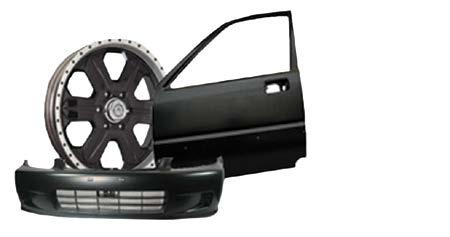
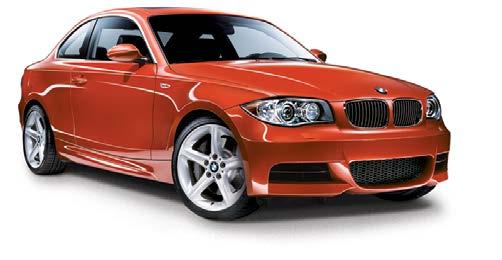
Audi Westmont
276 E. Ogden Ave., Westmont, IL 60559
Parts Direct: (630) 230.2222 / Fax: (630) 655.5750
Hours: M-F 7-6 / Sat 8-4 www.audiwestmont.com
200 E. Ogden Ave
Westmont, IL 60559 www.mercedesbenzofwestmont.com
(630) 654.1039 Phone: (630) 654.8167 Fax:
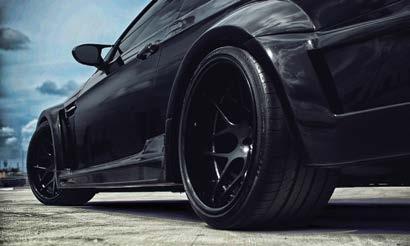
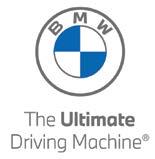
430 E Ogden Ave., Westmont, IL 60559 www.laurelbmw.com

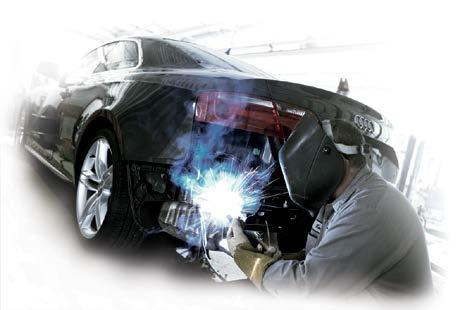
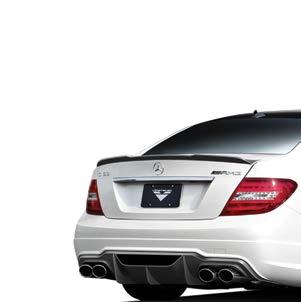
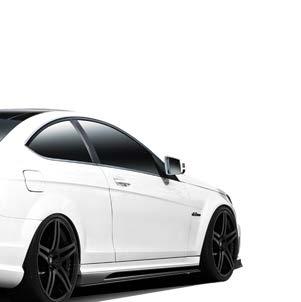


More than 25 first responders from the Omaha Fire Department and surrounding areas donned their rescue gear for a handson demonstration of the latest techniques in emergency vehicle extrication, preparing them to provide the best response for car accident victims, all thanks to CARSTAR Don & Ron’s Collision, Allstate Insurance, HURST Jaws of Life and the National Auto Body Council (NABC) First Responders Emergency Education (F.R.E.E.) program.
The hands-on demonstration was hosted May 10 at CARSTAR Don & Ron’s Collision in Omaha.
“It was good to get hands-on experience with new equipment on new vehicles,” said Brady Krajeski, a member of the Ralston Fire Department, after the training.
Today’s vehicles are equipped with numerous airbags, advanced technology and innovative safety systems that keep drivers safer in case of an accident. But these same safety advantages make it harder for first responders to rescue those drivers and passengers. Add to that the potential challenge presented by electric and hybrid engines, and first responders need a whole new arsenal of rescue tools and procedures.
The NABC F.R.E.E. program helps prepare local first responder teams to rescue accident victims from these late-model vehicles. The program provides education and live demonstrations on working with high-strength steel, airbags, advanced restraint systems, onboard technology and safety around alternative fuel vehicles. Since it was founded, it has provided education for more than 5,500 first responders.
Mark Krzemien, marketing manager for CARSTAR Don and Ron’s Collision, which has held five such events over the years, explained why his company is involved in the program: “We understand the complex material in today’s vehicles and wanted to give first responders the opportunity to practice extrication techniques on newer model vehicles.”
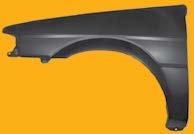


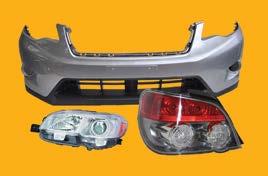

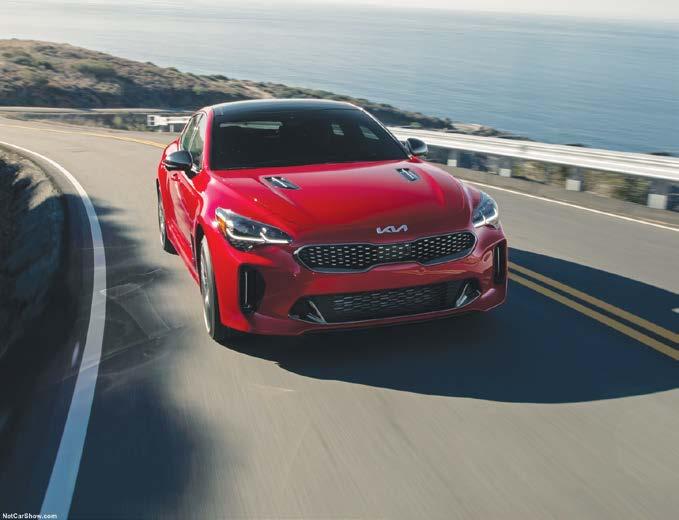
other runners, and placed 11th out of 16 who finished.
Cottrell, who also is general manager of Crash Champions in Akron, OH, credits his support troop, including his wife, daughter and church small group, with helping him touch the finish line.
Autobody News spoke to Cottrell about his ultramarathon experience and the importance of funding trade programs amid the ongoing collision repair technician shortage
Q:You’ve got a few medals in your office. What inspired the idea for running an ultramarathon to raise money for CREF?
A:Every year, the Northeast Ohio I-CAR Committee does some type of fundraiser or helping out a local school or schools. Last year, I had this idea of running as far as I could in a 24-hour period. I ended up stopping in 10 hours, and ran 53 miles. This year, we pushed a little further, and I signed up for this 200-mile event. We hooked up with Brandon Eckenrode from CREF. We sponsored this great fundraiser for schools across the entire state of Ohio, where people could donate a
one-time gift or a per-mile pledge for however far I’d run in that race.
Q:What was the hardest part of the ultramarathon? The hardest terrain?
A:
The hardest was Day Three, which was flat terrain, open farmland, because we were running against 20 mph headwinds, and it seemed like not a lot of progress. You couldn’t walk, because you would go nowhere. You could run, but you felt like you were doing twice the effort.
My daughter was crewing me throughout the whole event. After running eight hours that day, I told her, “We’re just going to stop for the day.” I think it was like 3 o’clock [p.m.], and I was like, “We’ll go the motel, we’ll get some rest, and we’ll get up in the middle of the night.”
We started at 2:30 in the morning, no wind, no traffic. Believe it or not, the hills weren’t as bad as running on the flat against 20 mph headwinds. There were some hills. It ended up being, I think, 4,000 feet of elevation — 4,000 vert and 4,000 decline of elevation throughout different areas. It’s not like Nebraska, where everything’s flat, or Iowa. We do have some different terrain [in Ohio]. But the majority of it wasn’t too bad.
Q: Did you get hurt or tweak any body parts, or did you emerge unscathed?
A: It was the most successful run I have ever done. Everything just went right. No injuries. By the time I finished, my knees down to my ankles were all swollen. I didn’t even realize it. It took a couple of days for the swelling to go down, and then I had a sore ankle that felt more like a tendon. That took me about a month to recover from that. I recovered good. I just couldn’t run, and I like to run. So, that hindered my running for about a month.
Q: Did you have a support group rooting you on?
A: There were a lot of people who were following me. I have a connect group I’m involved with at my church, and they were all getting together, praying for me and everything. There were times it was hard to walk for three to five miles. It was like no energy at all, just tough. And then all the sudden I get this burst of energy and just take off running. I give credit to prayer for that one. I just couldn’t have done it on my own.
Q:
Why is it important to raise money for technician education programs?
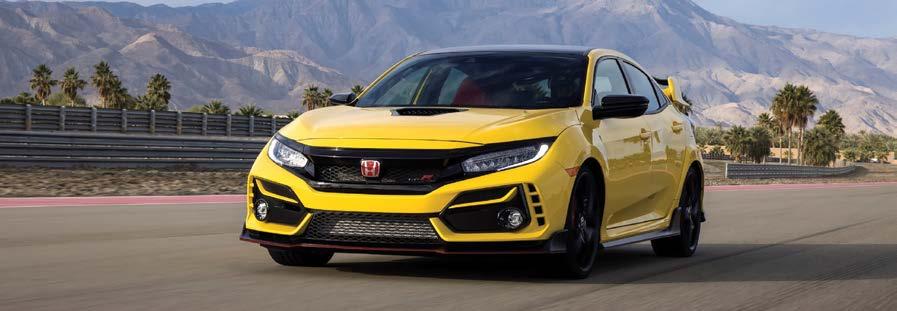
A: In our type of collision industry, the [school] equipment’s a little more expensive than paper and pens. Our industry is lacking on younger technicians. So, anything we can do to provoke the younger generation to get involved, the better off we are, and funding is going to help attract and help train what we’ve got coming in.
Q: A recent TechForce report found if trends continue, there will be a shortage of about 113,000 collision repair technicians in 2026. What do you think needs to happen to gin up interest in the industry?
A: I think people need to visit their local trade schools, whether it’s auto body or carpentry, or wherever. People need to be involved more with the school and not just sit back and hope for the next generation. People need to be actively involved in working with the instructors, seeing what the instructor needs are, and helping with the placement of students, as they’re coming through the technical schools.
Q: What classes or course tracks in I-CAR’s new curriculum do you think appeal to younger people?
A: The nice part about it is when the kids are done with this


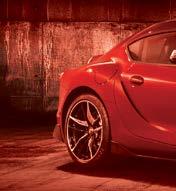



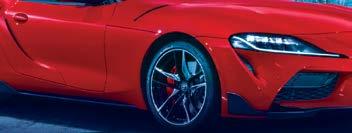
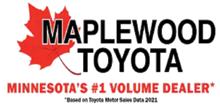




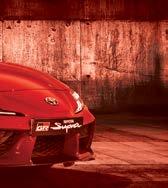

5
training, it’s not, “I’m certified to sweep your floors and clean your toilets;” they can do body repairs, they can do bumper repairs, and the important part is it makes them valuable to any shop. You can hire anybody to sweep your floor, but you can’t acquire somebody that already has some internship skills that you can get right into the industry. There are companies out there that have programs where they work along with younger techs too. That would be ideal if somebody already had some knowledge, they come in and work with a master tech, so that they could learn more.
It’s known there’s a shortage of young people in the industry. Is there a shortage of mentors?
A: Not everybody’s a good mentor. There are good techs, but that doesn’t mean they can mentor the next generation. It takes a special breed. It takes a special person, and they’ve got to be willing and patient, I guess, would be the best word.
Q: Several colleges are now offering the Collision Engineering Program. Why is there such a demand for these programs in community colleges? Do you expect this trend to continue?
A: I sure hope it does. I was working with a local college about 15 years ago, and we never could get the program going. Like you said, there is a shortage, and there’s going to be a major shortage here in a couple of years, and that’s a concern. We have to be training the next generation to have them ready for somebody to take over.
Q:
How much money did you raise for CREF during the Coast to Coaster? You had a goal to raise $20,000, right?
A:
That was my goal. I fell a little short. I think we got like $3,500.
Q:
What other fundraising events are in the pipeline that you’re aware of, both for CREF and other technician education programs?
A:
I know Columbus, OH, does a golf ball drop, and they raise multi-thousands of dollars every year, through [the Columbus I-CAR Committee]. They were even generous enough to support my event with some of the funds that they raised.
I don’t think anybody else out there is crazy enough to run 200 miles for a fundraiser other than me. It ended up being 213 miles, total. We did get sponsors to sponsor me to stay in a
motel every night, so we would run as far as we could, or as far as felt good, and then we’d spend the night in a motel. My daughter would travel like five miles ahead and meet me, and be my aide with food and drink and stuff like that.
Q: What do your techs think of you? Are you known as like “the marathon guy” at your shop?
A: I’ve been called “The Miracle Man,” “The Marathon Man,” “Extraordinary.” [“I call him ‘extraordinary,’” his wife says through the phone. “People were calling you crazy, so I called you ‘extraordinary.’”]
Q: This is kind of a corny question. Did running the ultramarathon make you appreciate having a car?
A: No. I believe that running is for more than just pleasure, and yesterday would be a good example, when I ran to the alignment shop to pick up a car before work and then drove it back to work before the day started. I like to go to the destinations, so I don’t believe you need a car for everything.
Q: Have any of your technicians been inspired to invest in collision education programs, or to get more into health through your events?
A: I would say the latter would be more the case. You do see people wanting to exercise more, kind of conscious of what they’re eating, and stuff like that. I never thought of it that way, but yeah, I have noticed that part.
Q:
No one’s trying to race you [on foot] during break or anything?
A: Nobody wants to go out running yet. They’re too old, man. They’re almost my age.
Q: Anything else you wanted to add?
A: I had a blast. It was a fun event. It was a successful event. It was actually on roads the majority of the time. So, they set it up so that you would visit different cities going through the state of Ohio, so it was nice getting to see different cities that I’ve never been through before. I was impressed with Lebanon, [OH] because I’ve never been there before, and I heard that they had done some Hallmark movies there, and it was a lot bigger, and it was a very clean city.

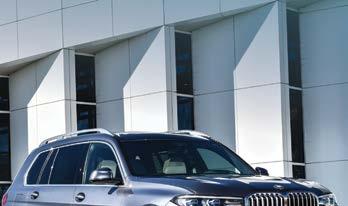



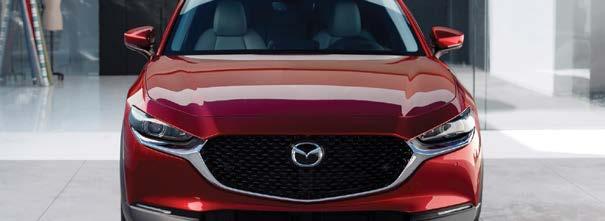


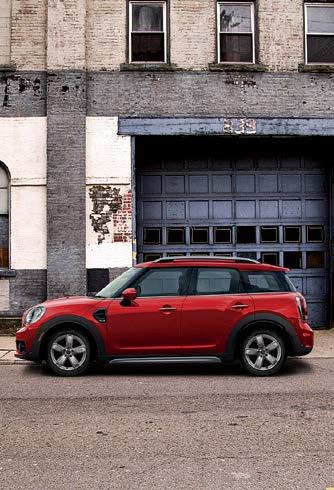



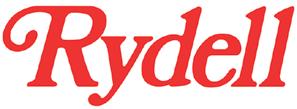


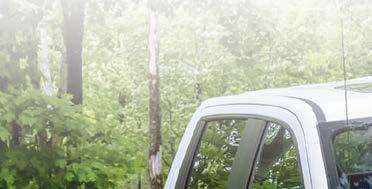
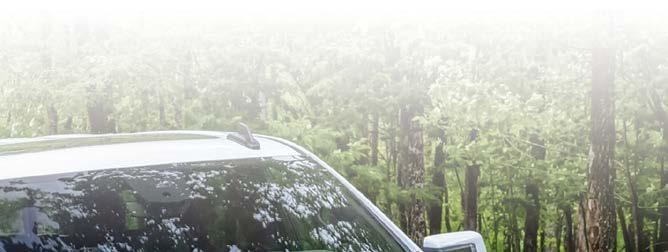


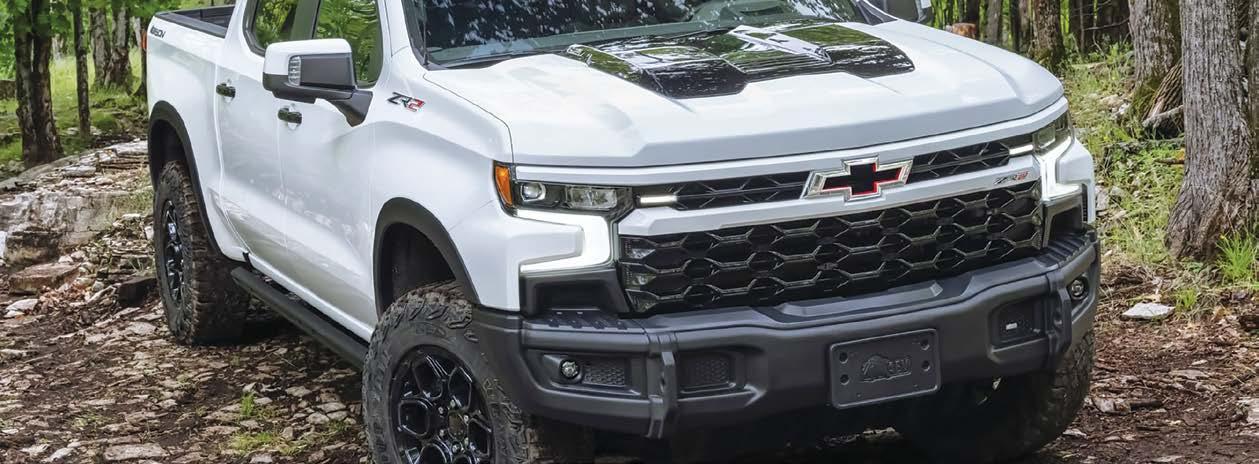







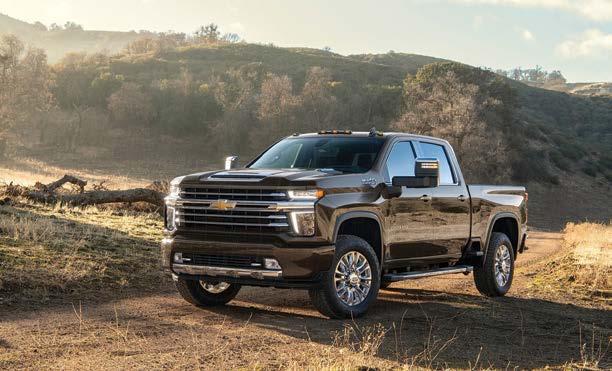

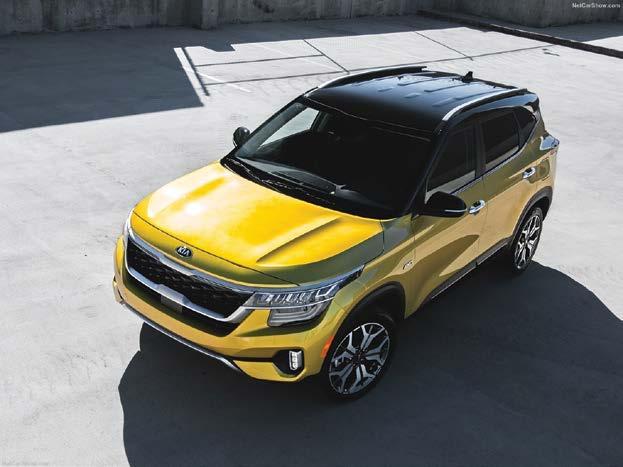

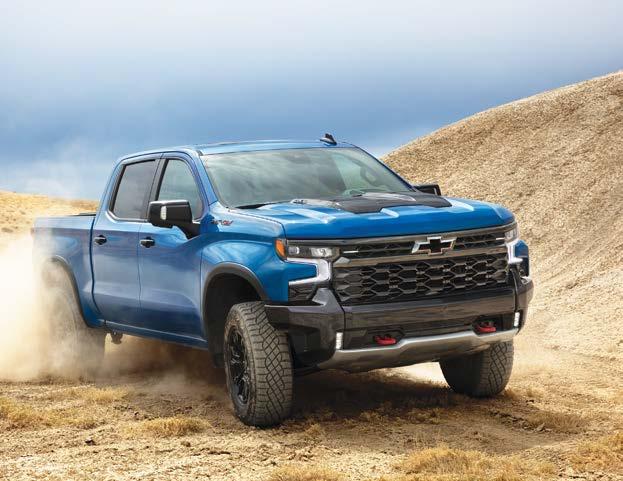





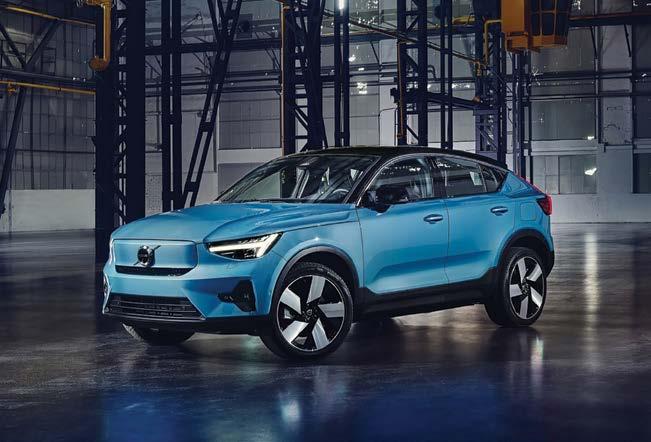

Michigan State Rep. Natalie Price, D-Berkley, introduced a bill in April to the Michigan House of Representatives that would significantly increase fines for motorists who intentionally modify their vehicles’ exhaust systems to produce excessive noise.
Under current Michigan law, drivers and dealers are prohibited from altering exhaust systems to exceed state noise limits or offering such vehicles for sale. Violations can result in fines up to $100.
Price’s proposal would increase these fines to $500 for first-time offenders and $1,000 for secondtime offenders, with repeat offenders potentially facing misdemeanor charges and fines up to $1,000.
“This is definitely beyond just being inconvenienced. This is the No. 1 thing I hear from my constituents … right along Woodward, that the noises that are coming out of modified vehicles are really creating harm within those communities,” Price told Bridge Michigan. She emphasized the loud noises disrupt residents’ lives, causing health issues such as sleep deprivation and increased stress.


Residents along the Woodward Avenue corridor in Oakland County, a hotspot for the annual Woodward Dream Cruise, frequently mistake the loud car noises for gunshots, leading to a spike in 911 calls.
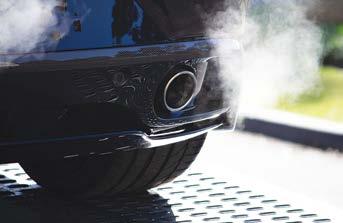
“My neighbor came over earlier tonight and was truly concerned it was gunshots not cars backfiring,” resident Alyssa Marsack said in a press release from Price’s office. “My dog has been scared several times just today and ran inside as she tried to enjoy her backyard. My neighbor with a young child has been kept up until 2 a.m. due to the noise on a weekday. I have had to close my windows and use the AC when I don’t want to just to keep the noise level down so I can sleep.”
“I’ve had constituents who need to heal after surgery, caregivers of folks in hospice, young families bringing home newborn babies,” Price said. “This is very harmful to their health, not being able to sleep, not being able to rest and recover.”
“We’re well aware of the issue of modified vehicles and drag racing on our roads,” Birmingham Police Chief Scott Grewe said in the same press release. “Existing law limits what we can do about it, and unfortunately, the current $100-per-offense civil infractions do not seem to deter this behavior. With higher penalties for those intentionally seeking to disturb the peace, this bill will hopefully disincentivize vehicle modification and offer us more tools to deal with those who continue doing so.”
The proposed legislation offers an option to waive fines if offenders repair their vehicles to meet noise regulations before their court appearance. “If a vehicle is loud due to neglect or an accident, those aren’t the people being targeted
with this legislation,” Price said. The state vehicle code specifies maximum noise levels for different vehicle types. Cars over 8,500 pounds must not exceed 90 decibels on streets with speed limits of 35 mph or more, and 86 decibels on streets with lower speed limits. For motorcycles and mopeds, the limits are 86 decibels at higher speeds and 82 decibels at lower speeds. By comparison, a normal speaking voice measures around 60 decibels, while a rock concert reaches about 120 decibels.
Motorcycle advocates argue that louder bikes enhance safety by making them more noticeable to other drivers.
“Somebody will hear you or see you that didn’t before,” said Ed Schuitema, legislative director for the Michigan branch of American Bikers Aiming Toward Education. He recounted an incident where he was run off the road, suggesting a louder bike might have prevented it.
“It’s a visibility issue, it’s a safety issue,” Schuitema asserted.
The bill has been referred to the Committee on Transportation for further consideration.

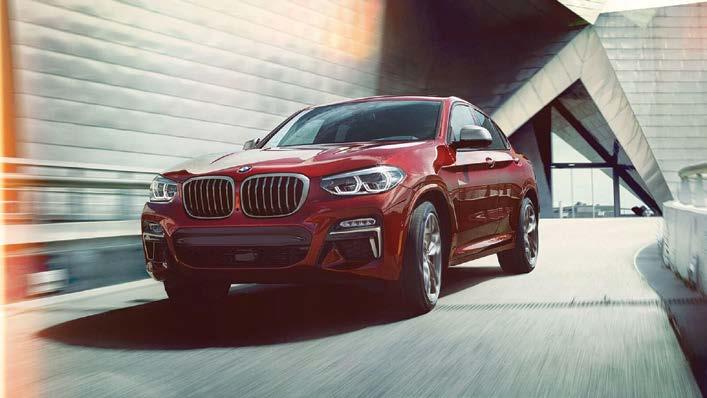
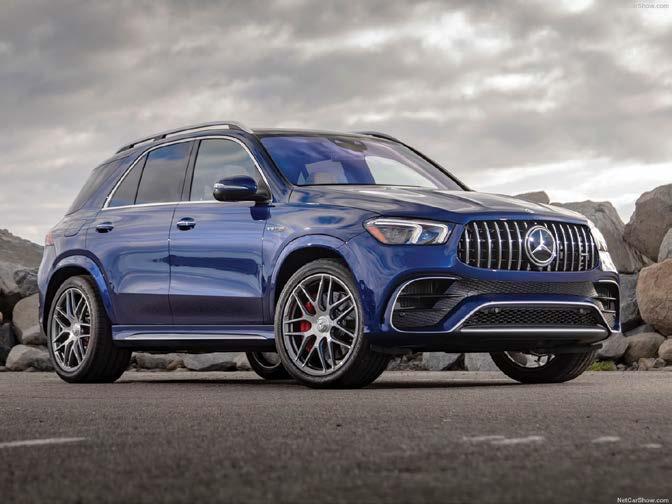











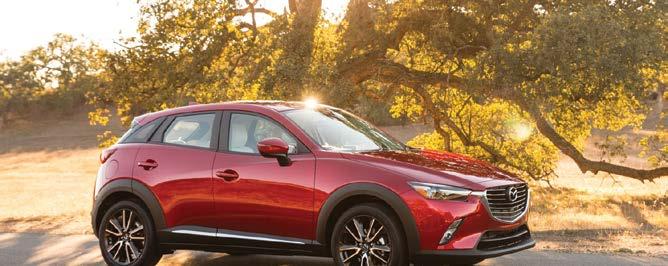
Parts Fax: 515-278-2917
Hours: M-F 8am-5:30pm; Sat 8am- 4pm www.bmwdesmoines.com jcarlson@lithia.com

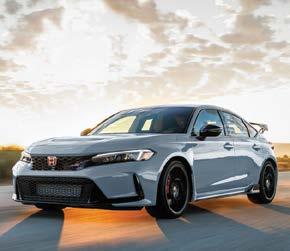


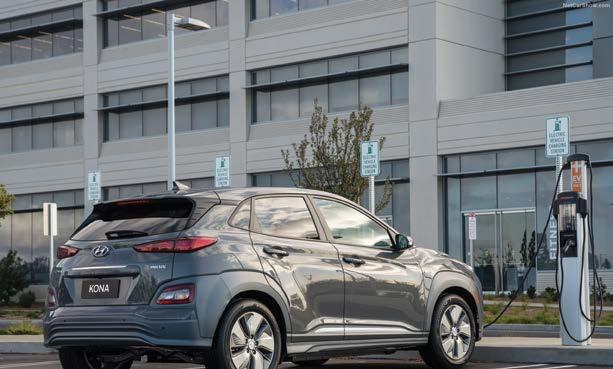





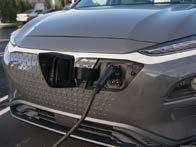

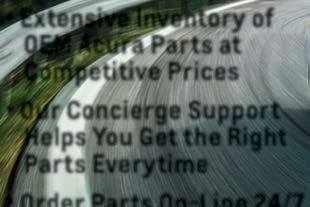






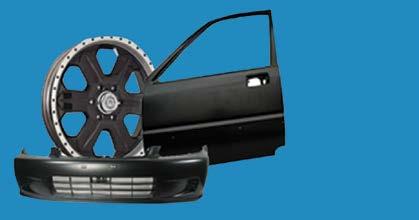
Car ADAS Solutions announced the opening of ADAS Solutions, a new calibration center in Lansing, MI. The facility, distinctively female and veteran-owned, is operated by Gail DeYoung and Heather Friedriechsen
Following the success of their first center in Grand Rapids, MI, DeYoung and Friedriechsen decided to expand their venture. The Lansing center marks their second entry into the ADAS calibration space, aiming to deliver high-quality services to the local community.
“Lansing seemed like a logical place to go,” said DeYoung. “There are some great body shops, but they don’t have any support for ADAS; they are just doing what they can.”
The new Lansing center includes state-of-the-art technology and skilled technicians ready to service various vehicles. Specializing in advanced driver-assistance systems (ADAS), the facility aims to provide comprehensive calibration services that meet manufacturers’ standards. With an emphasis on quality and safety, DeYoung said that ADAS Solutions is poised to become a critical resource for local auto body
shops and car owners, filling a gap in the Lansing automotive service market.
“Gail and Heather have been in the ADAS space for many years with a shared vision of ‘Making the world a safer place to drive,’ and we are excited that ADAS Solutions will be extending their outreach with this second location,” said Kevin Caruso, COO of Car ADAS Solutions.
Caruso said the Car ADAS Solutions team assisted DeYoung and Friedriechsen with any hurdles they faced during the set-up process. The first of these was finding a suitable location for the new center.
“We searched on our own for about two months for the right space and just hit dead end after dead end,” said DeYoung.
However, with the help of Car ADAS Solutions’ real estate connections, they were able to find a great location that met all their needs.
The 6,000-square-foot facility is equipped with the latest technology and tools to provide top-notch calibration services. This includes advanced diagnostic equipment,

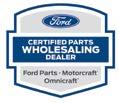

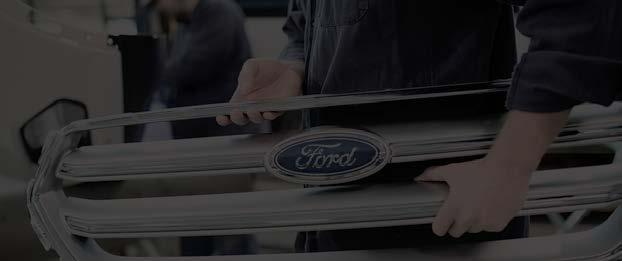
specialized calibration tools and expert technicians trained in ADAS systems.
In addition to providing quality ADAS calibration services, the Lansing facility will also offer training for technicians and body shop owners.

“We plan to offer ADAS training not only to collision shops but also to the general repair and insurance markets through classes,” DeYoung said.
He said this dedication to education and training sets ADAS Solutions apart from other service centers and reinforces their
with skilled technicians.
“We had an ad on ZipRecruiter and Indeed for weeks, if not months, but couldn’t get any quality applicants,” they said. “Car ADAS Solutions helped us find great applicants.”
They have already hired two employees and sent one technician for training so they could open the facility with a certified technician.
Beyond hiring, DeYoung noted the training and support from Car ADAS Solutions have been invaluable in opening this new facility and was what initially attracted him to reach out to the company.
“Nobody else knows ADAS like they do,” said DeYoung. “Just today, we called them twice, and they helped us with a problem in the shop. I don’t know how other places are opening without their support.”
With the assistance of Car ADAS Solutions, DeYoung and Friedriechsen plan to open two more locations in Michigan in the
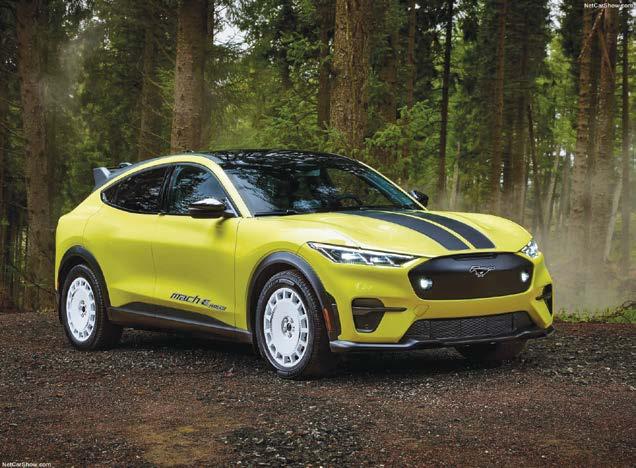
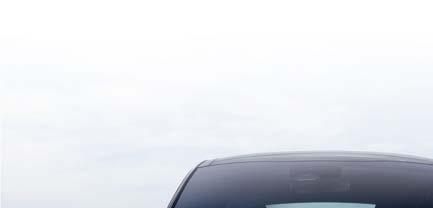





Genuine Kia Parts* are specifically manufactured from original engineering specs to ensure the same exceptional quality, performance and safety as when you first drove your Kia off the lot. Plus, they’re covered by our 12-month Replacement Parts Limited Warranty.
Gerald Kia of Matteson Matteson (708) 720-8972 (708) 720-0657 Fax
M, W, F 6am-5pm Tu, Th 6am-7pm; Sat 8am-2pm mattesonkiaparts@geraldauto.com www.geraldkiamatteson.com
Raymond Kia Antioch (847) 395-3600 (847) 838-7997 Fax
M-F 7am-6pm; Sat 7am-2pm kweber@raymondchevrolet.com
Midwest Kia Wichita (316) 652-2960 (316) 652-2992 Fax
M-F 8am-6pm; Sat 8am-2pm jjensen@midwestkia.com


Kia of Lansing Lansing (517) 393-5700 (517) 393-6767 Fax
M-F 7:30am-6pm mattr@lansingisyoung.com www.kiaoflansing.com
Seelye Kia of Kalamazoo
Kalamazoo (269) 488-0614
M-F 7am-6pm gmeskil@seelye.com
Lupient Kia of Brooklyn Park
Brooklyn Park (800) 569-5735 (763) 424-9437 (763) 424-4631 Fax M-F 7am-6pm
Lou Fusz Kia
St. Louis (877) 221-4151 (314) 595-4942 Fax
M, W, F 7am-8pm; Tu, Th 7am-6pm Sat 7:30am-4pm fuszkiaparts@fusz.com www.kia.fusz.com
Napleton’s
Mid Rivers Kia
St. Peters (888) 816-9729 (636) 926-0683 Fax
M-F 7am-6pm; Sat 7am-3pm bprinster@napleton.com pschnare@napleton.com www.midriverskia.com
Suntrup Kia
St. Louis (800) 727-8496 (314) 815-3060 Fax M-F 7am-5pm www.suntrupkiasouth.com
Kia of Fargo Fargo (800) 728-7601
(701) 282-5924 Fax
M-F 7am-5:30pm; Sat 8am-5pm
The Women’s Industry Network (WIN) announced a record 30 recipients of its 2024 WIN College Student Tuition and Conference Scholarship Awards, which gave select recipients tool kits and/or scholarship funds.
This year also saw a record number of student applications, as WIN partnered with the Collision Repair Education Foundation (CREF) to expand its reach to those looking for a career in collision repair. These scholarships are presented annually to deserving students enrolled in post-secondary collision repair technology programs.
As part of the application process, each WIN Scholarship applicant registered for and received a complimentary WIN Student Membership. WIN also supports collision repair instructors with access to free WIN memberships through the Pay It Forward campaign.
The program, which was expanded this year, offers awards on two financial levels, ranging from $500 up to $2,500, based on the selection team’s evaluation of an application and the candidate’s
WIN Student Relations Committee. Recipients can also receive wellstocked new tool kits, valued at more than $500, which included four additional tools per set this year.
“Those scholarship recipients receiving tuition monies and tools were acknowledged in either the Champions or Stars levels,” Kottschade said. “But, because we had so many applicants, two new scholarship categories, Trailblazers and Legends, were added this year where additional recipients were awarded either a financial stipend or a full tool kit.”
All award recipients and applicants will be eligible to partake in WIN’s monthly mentoring program, where they participate in student engagement group calls and share best practices with collision industry professionals as well as their peers.
“WIN student members will connect with other members who are in a similar stage in their careers. The mentoring program also provides connection with women in the industry who can share relevant experiences from their success,” said Kottschade. “These networking
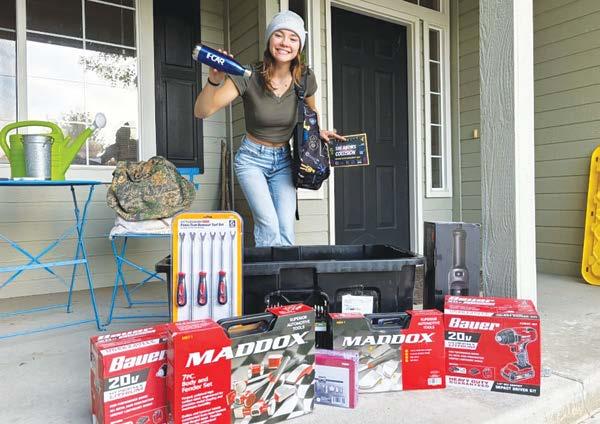
field and hopefully create lifetime friendships that further WIN goals for longer term career advancement and retention.”
Funds to support the scholarship program come from various sponsors and WIN’s general fund, as well as the recent scholarship walk at its Annual Conference.
“This year we have separated the Scholarship Walk and the Scholarship Fundraiser to simplify it for participant involvement, but
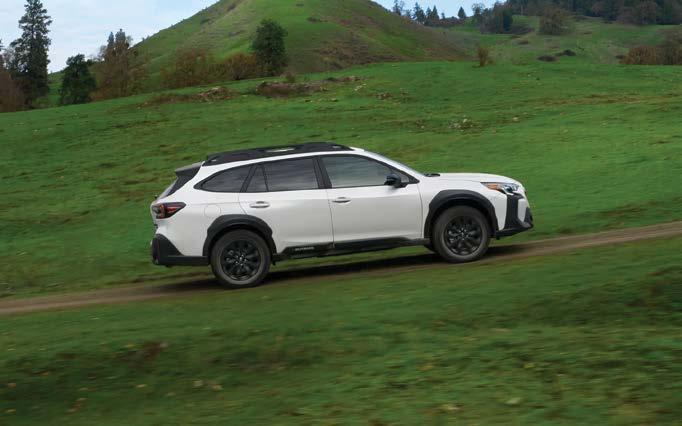


Maple Hill Subaru
Kalamazoo (800) 323-0022
Direct (269) 978-0191 (269) 342-0065 Fax Mon-Fri 8-5:30 www.maplehillauto.com
Luther Bloomington Subaru Bloomington (800) 451-5078
Direct (952) 887-0600 (952) 881-1787 Fax Mon 6:30-6; Tue-Fri 6:30-9; Sat 8-4 parts@bloomingtonsubaru.com www.bloomingtonsubaru.com
there is still the opportunity to donate to the scholarship cause,” said April Keim and Christina Sepulveda, WIN Scholarship Fundraising co-chairs. “Fundraising is still open through May 31, as we have partnered with RallyUp and created the WIN Scholarship Fundraiser which allows those inspired to support our future women technicians of collision repair to still contribute to this important cause.”
Byers Airport Subaru
Columbus (614) 552-5490
Mon-Fri 7:30-6; Sat 8-12 wholesaleparts@byersauto.com
Ken Ganley Subaru North Olmsted North Olmsted (440) 788-7060 jtjoyce@ganleywestside.com Mon-Fri 7:30-6 Sat 8-5
Morrie’s Brooklyn Park Subaru Brooklyn Park (800) 343-6999 (763) 765-1462 (763) 765-1487 Fax Mon-Fri 7-7; Sat 8-5 bpsubaruparts@morries.com www.brooklynparksubaru.com
Winners
Champions Recipients:
Teisha Chambers, Miami Gardens, FL, McFatter Technical College
Alicia Davis, Clarksville, TN, Lincoln College of Technology-Nashville
Tamara Fowlkes, Chattanooga, TN, Chattanooga State Community Technical College
Autumn Havey, Boise, ID, Dennis Technical Education Center
Desirae Kane, Lawton, OK, Great Plains Technology Center
Izzy Povod, Williamsport, PA, Pennsylvania College of Technology
Alexa Rogers, Bruceton, TN, Tcat Henry Carroll
Lauren Schmidt, Kennett Square, PA, Automotive Training Center
Mia Seacrist, Norfolk, NE, Northeast Community College
Krystal Vazquez, McKinney, TX, Colllin College technical campus
Stars Recipients:
Charlotte Lake, Spring, TX, Universal Technical Institute
Claudia Mandujano, Pelham, AL, Lincoln Tech
Trailblazers Recipients:
Jamie Achenbaugh, Council Bluffs, IA, Metropolitan Community College
Victoria Alexander, Rexburg, ID, Idaho State University
Esperanza Calderon, Marissa, IL, Career Center of Southern Illinois
Mikayla Hoth, Brooklyn Park, MN, Dunwoody College of Technology
Bobbi Lockett, Chattanooga, TN, Chattanooga State Community College
Magaly Mora, Chicago, IL, Kennedy Kin College
Keyla Orellana, Houston, TX, Universal Technical Institute
Briana Onofre, Minneapolis, MN, Dunwoody College of Technology
Cher Riopelle, The Woodlands, TX, Universal Technical Institute
Samantha Rivera, Highland Mills, NY, Hudson Valley Community College
Legends Recipients:
Amanda Baker, Wake Forest, NC, Wake Tech Community College
Carolyn DesJardin, Clarksville, TN, Tennessee College of Applied Technology–Henry/Carroll
Mattie Johnson, Bagley, WI, Southwest Wisconsin Technical College
Bailey Longstaff, Ottawa, KS, Washburn Tech University
Jazmyne Martinez, Denver, CO, Warren Tech
Diamond Molina, San Antonio, FL, Hillsborough Community College
Kyla Sanders, Borden IN, Prosser Career and Education Center
Madysen Smith, Dauphin, PA, Dauphin County Technical School
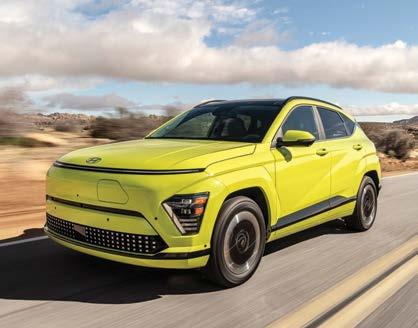


Maaco expanded its reach with the opening of a new location at 1510 Progress W. Lane in O’Fallon, MO, driven by a veteran’s dedication to community and excellence.
The new franchise is owned by Quincy Land , a 20-year U.S. Marine Corps gunnery sergeant and seasoned professional in various industries. Land’s diverse experience and commitment to quality are set to bring a new level of automotive service to the O’Fallon community.
“We decided to join Maaco because we were looking for an organization where we could wake up motivated and return home fulfilled at the end of the day,” said Land. “As we did our research, we found that Maaco would partner with us in that effort.”
The facility, boasting 12,000 square feet of space, offers full-service automotive collision repair, staffed by a team of six skilled professionals. The team’s expertise spans across the
automotive and business sectors.
Supporting Land in this new venture are his wife, Laura Land , and son, Quincy Jr. Laura Land, with a background in accounting, has been managing the family’s coffee shop and hair salon since 2010. Quincy Jr. brings a degree in chemical engineering to the table, enhancing the business’s focus on data analytics and customer service.
Maaco in O’Fallon plans to support local charitable organizations such as Toys for Tots and Wounded Warriors, reinforcing its commitment to the community.
“I am proud to witness Maaco’s continued growth in the state of Missouri,” said Daryl Hurst , president of Maaco. “Community and quality are key aspects of the service we provide at Maaco, and I look forward to welcoming Quincy Land and his multigenerational legacy to the Maaco franchise family.”
Michigan
MAPLE HILL HYUNDAI
Kalamazoo
5622 W. Main St. 800-323-0022
269-978-0191 Direct
269-342-0065 Fax Mon-Fri 8am - 5:30pm www.maplehillauto.com
Ohio
CLASSIC HYUNDAI
Mentor 8460 Tyler Blvd. 440-266-6750
440-266-6763 Fax Mon-Fri 7am - 6pm Sat 7am - 3pm jkash@driveclassic.com www.driveclassichyundai.com
COLUMBIA HYUNDAI
Cincinnati 10981 Montgomery Road 513-489-6333
866-381-9975 Fax Mon-Fri 8am - 5:30pm; Sat 8am-12pm columbiaparts@josephauto.com www.columbiahyundai.com
GANLEY WESTSIDE
HYUNDAI
North Olmsted 25600 Lorain Rd. 440-734-9375
440-686-3426 Fax Mon-Fri 8am - 6pm nicholas.b@ganleywestside.com
Mitchell, an Enlyte company, released its “Plugged-In: EV Collision Insights” report for the first quarter of 2024. The report showed a rise in electric vehicle (EV) total loss frequency in both the U.S. and Canada, attributed to a decline in prices for used EVs.
The data showed the total loss rates for EVs in the U.S. and Canada reached 9.93% and 7.48%, respectively. This marks an increase of approximately 8% from Q4 2023 and 30% from Q3 2023. Despite this surge, the EV total loss frequency is still comparable to newer internal combustion engine (ICE) vehicles, which recorded a rate of 9.51% in the U.S. and 7.44% in Canada.
EV repairable claims frequency also rose, to 2.26% in the U.S. and 3.41% in Canada, an increase of approximately 40% and 38% respectively over Q1 2023.
“Slowing new sales, manufacturer price reductions and changing consumer sentiment are impacting the value of used EVs,” explained Ryan Mandell, Mitchell’s director of claims performance. “As a result, the total loss frequency for collision-damaged EVs is increasing.
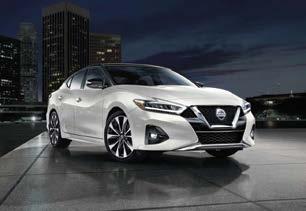

However, it is also increasing for new gasoline-powered vehicles, which are comparable to EVs in terms of their complexity and cost to repair.”
vehicle at $48,759.
That same rapid move towards price parity, however, also resulted in weakened consumer confidence in the financial viability of used EVs, with prices falling by more than 30% year over year versus a 3.6% decline for used ICE vehicles.
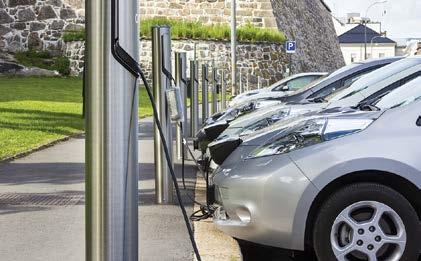
Tesla price reductions in late 2023 spurred precipitous price drops throughout the EV segment. As a result, price parity between EVs and ICE vehicles may be coming faster than previously predicted.
For example, Cox Automotive reported in the U.S., the average transaction price at the end of 2023 for a new EV was $50,798, only $2,040 more than a gas-powered
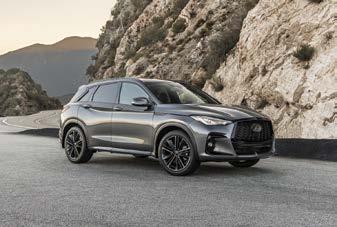

The report also highlighted other notable differences between EV and ICE vehicle claims.
Repair labor hours: The average mechanical labor hours for EVs were nearly double those for ICE vehicles, at 3.04 versus 1.66 hours. With the average mechanical labor rate for both the U.S. and Canada exceeding $100 per hour, this additional time adds significant cost to EV repairs.
The extra EV labor hours are likely due to the management of the high-voltage battery, which requires de-energization and often complete removal to protect it during collision
repair and refinishing processes.
Claims severity: Despite a decrease in average claims severity in Q1, EVs continue to have higher severity costs. In the U.S., the severity difference between EVs and ICE vehicles was $1,363 or 29% ($6,066 versus $4,703). In Canada, the difference was $1,700 CAD or 33% ($6,810 versus $5,110 CAD).
Claims frequency: EV claims frequency increased to 2.26% in the U.S. and 3.41% in Canada, representing a rise of 40% and 38% respectively over Q1 2023.
Parts use and repair: Due to the lack of a robust inventory of aftermarket and recycled parts, EV collision repairs are more likely to involve OEM parts compared to ICE vehicles (89.29% versus 65.14%). EV parts are also more challenging to repair due to their lightweight nature designed to offset heavy batteries. In Q1, 13% of EV parts were repaired compared to nearly 15% for ICE vehicles.
For more detailed insights and to access the full report, visit the Mitchell website at www.mitchell. com/plugged-in.





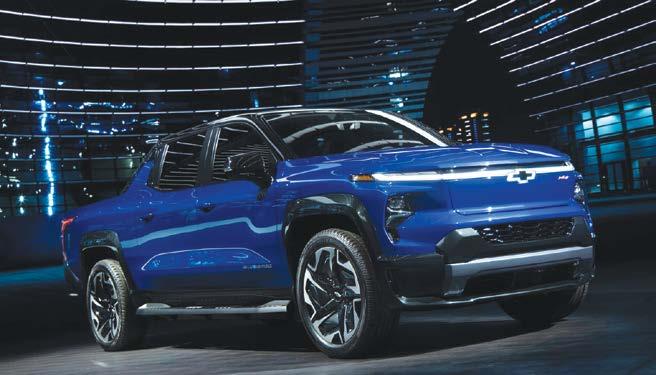
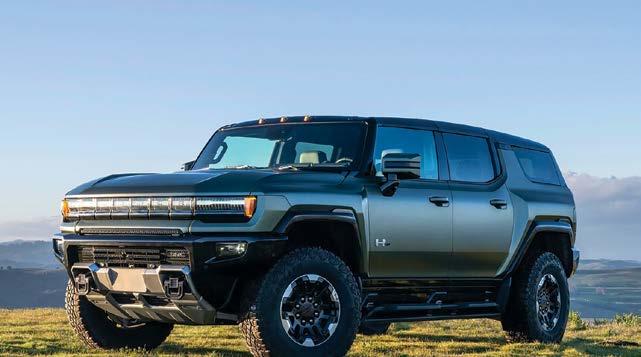
Illinois
Piehl Motors
PRINCETON
800-845-8964
815-875-4411
815-875-4293 Fax
M-F 7:30 am - 5:30 pm Sat 7:30 am - 12 pm p.lenhausen@piehlmotors.com
Indiana
Schepel Buick GMC
MERRILLVILLE
800-588-7757
219-769-7757
219-755-0339 Fax
M-F 7:30 am - 5 pm parts@schepel.com
Iowa
Shottenkirk Automotive
FORT MADISON
877-310-0513
888-945-3729 Fax
M-F 7:30 am - 5 pm gmparts@shottenkirk.com
Michigan
Ed Rinke Chevrolet Buick GMC CENTER LINE
586-497-4100
586-754-5030 Fax
M, Th 8 am - 9 pm T, W, F 8 am - 6 pm
LaFontaine Buick GMC Cadillac HIGHLAND
877-552-2580
734-793-6000
734-793-1101 /1102 Fax
M-F 7 am - 6 pm Sat 8 am - 2 pm kmason@lafontaine.com
Minnesota Mills Parts Center WILLMAR
800-247-1158
866-235-6700 Fax M-F 8 am - 5:30 pm
Missouri
Bob McCosh
800-800-8071 573-449-4103 573-441-5632 Fax M-F 7 am - 6 pm Sat 7 am - 3 pm gmparts@bmcmail.com
Rydell
FORKS
701-746-0412 701-335-2556 24 Hr Fax M-F 7am - 6 pm parts@rydellcars.com www.rydellcars.com
Ohio
#1 Cochran Chevy Buick GMC
YOUNGSTOWN
800-476-0760
330-726-2297
330-726-0709 Fax
Mon-Thu 7am-6pm Fri 7am-5:30pm Sat 7am-3pm matt.fullerton@cochran.com
Jake Sweeney Chevrolet SPRINGDALE
800-582-5253
513-782-2829
513-782-2846 Fax
M-F 7:30 am – 6 pm Sat 8 am – 2 pm cscott@jakesweeney.com www.jakesweeneychevy.com
Joseph Chevrolet CINCINNATI
800-752-1423
513-741-6735
513-741-3814 Fax
M-F 7:30 am – 5:30 pm Sat 7:30 am – Noon josephgmparts@yahoo.com
800-352-7275 24-HR Fax M-F 8 am - 6 pm Sat 8 am - 3pm Wisconsin
920-468-3673 Fax M-F 7 am - 7 pm Sat 7 am - 2 pm parts@gandrud.com
Toyota of Wooster and Volkswagen of Wooster were sold to Firelands Auto Group, which has changed the dealerships’ names to Firelands Toyota of Wooster and Firelands Volkswagen of Wooster, respectively.

Included in the sale of the two dealerships is an off-site body shop, which will undergo renovations to add more service stalls and lifts. The three separate buildings include more than 26,000 square feet of facility space on 3 acres of land.
With the sale, the dealerships become the sixth and seventh in the Firelands Auto Group portfolio, which includes five more dealerships and a collision center within 35 minutes of Sandusky, OH. The new dealerships are about 1.5 hours outside of Sandusky.
The sale was announced by Tim Lamb, president of the Tim Lamb Group, who brokered the sale of the two dealerships to Patrick O’Brien of Firelands Auto Group.
In 2011, Lamb facilitated the original sale of both dealerships to Dave Hill, who still owns a used vehicle dealership in Wadsworth, OH. The sale to O’Brien and Firelands was closed April 30.
Lamb also brokered the deal when Firelands Auto Group
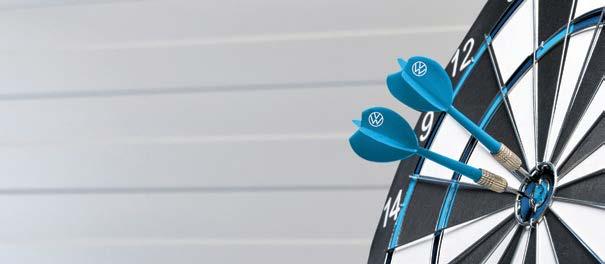
Maple Hill Volkswagen Kalamazoo
800-323-0022
Direct 269-978-0191
Fax: 269-342-0065
M-F 8am-5:30pm www.maplehillauto.com
Molle Volkswagen Kansas City 816-941-4969
M-F 7am-6pm; Sat 8am-3pm jbarczak@mollevw.com ewolf@molleautogroup.com
M-F 7:30am-6pm; Sat 8am-12pm wholesaleparts@byersauto.com
Ken Ganley VW North Olmsted North Olmsted 440-734-1076
M 7:30am-7pm T-F 7:30am-6pm Sat 8am-4pm jim.j@ganleywestside.com www.kenganleyvwnortholmsted.com
bought Firelands Toyota of Sandusky and Firelands Chrysler Dodge Jeep Ram in 2020, and most recently, Firelands Honda of Sandusky in 2023.
When O’Brien purchased his first Firelands Auto Group store in Norwalk, OH, in 2017, he hoped to grow a larger footprint of brands with multiple stores throughout Northern Ohio. Firelands Auto Group’s now seven dealerships offer customers a broad selection of new and used vehicles.
“We have worked with Tim Lamb on multiple transactions, and we not only consider him a trusted advisor, but an expert in his field,” said O’Brien.
“It’s been a pleasure working with Patrick to help him expand the Firelands platform and locate opportunities that fit his growth plans,” said Lamb. “Having worked with each of these gentlemen previously allowed me to understand their wishes and in turn make the process that much smoother for both parties.”
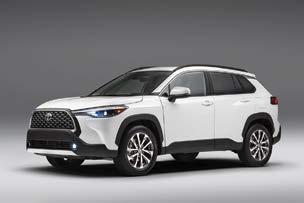
AirPro Diagnostics has entered into an agreement with Fix Network to supply its franchisees diagnostics and ADAS calibrations technologies.
This relationship is a significant milestone in AirPro Diagnostics’ commitment to delivering innovative diagnostic technology and solutions to the automotive collision repair and glass industries.
This agreement includes AirPro’s Auggie mobile ADAS forward-facing camera calibrations device for Fix Network’s collision, glass and mechanical brands. These brands include Fix Auto Collision Canada, Fix Auto Service, NOVUS Glass, ProColor Collision, Speedy Auto Service and Speedy Glass USA.
In addition, AirPro’s systems and equipment deliver to its current customer base a 99.6% service success rate, dramatic reduction in cycle time and comebacks, coverage on 98% of all vehicles (including 2024 models), quick response from a Brand Specialist tech on tool in less than two minutes, and a huge return on investment (ROI).
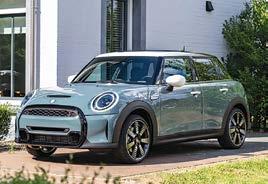
Ten years after the National Highway Traffic Safety Administration (NHTSA) mandated the recall of Takata airbags nationwide because of the risk they pose for bodily harm — or even death — to occupants, more than 6.4 million vehicles in the U.S. still have those airbags, according to CARFAX data.
More than 2.5 million — roughly 40% of all these unfixed vehicles — are located in states that NHTSA calls Zone A, according to CARFAX vehicle history data. These states “pose the highest threat to safety” because of their high heat and humidity: Alabama, California, Florida, Georgia, Hawaii, Louisiana, Mississippi, South Carolina and Texas.
Fourteen states have 150,000 or more unfixed vehicles with Takata airbags:
Texas: 788,000
California: 739,000
Florida: 305,000
North Carolina: 216,000
Ohio: 209,000
New York: 206,000
Pennsylvania: 204,000
Tennessee: 202,000
Arizona: 201,000
Georgia: 195,000
Illinois: 167,000
Michigan: 164,000
Indiana: 154,000
Alabama: 151,000
Extended exposure to heat and humidity can cause Takata airbag inflators to deploy far more explosively than expected. That excessive force can launch pieces of metal surrounding the inflator into a vehicle’s cabin like shrapnel, posing a high risk to occupants.
NHTSA data shows 27 people in the U.S. have been killed by these airbags and at least 400 have been injured. More than 67 million airbags in more than 40 million vehicles have been recalled in models from 19 automakers.
“Even after a decade of a dedicated and committed effort by the vehicle manufacturers, government, nonprofits and businesses, it’s concerning that so many affected vehicles continue to be driven on U.S. roads with these potentially dangerous airbags sitting inside,” said Faisal Hasan, CARFAX general manager for data. “It’s easy to see recall fatigue settle in for
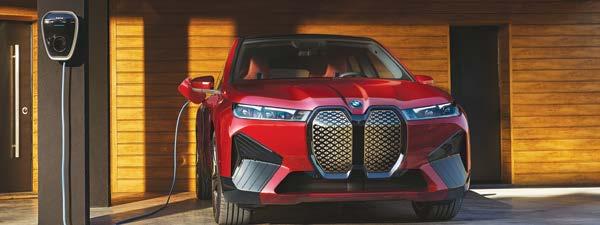

YOU ONLY GET ONE CHANCE AT THE FIRST REPAIR.
Original BMW Parts & Accessories.
Illinois
Laurel BMW of Westmont Westmont
630-230-2890 Direct Wholesale
M-F 7am-6pm Sat 8am-3pm www.laurelbmw.com
Iowa
BMW of Des Moines Urbandale
515-446-3660
515-278-2917 Fax
M-F 8am-5:30pm Sat 8am-4pm jcarlson@lithia.com www.bmwdesmoines.com
Missouri
Autohaus BMW St. Louis 888-811-6199 314-880-8428 Fax M-F 7am-6pm brian.fischer@bmwautohaus.com
Ohio
Kelly BMW
Columbus 614-471-2277 614-476-2488 Fax M-F 8am-6pm Sat 9am-2pm www.kellybmw.com
©2024 BMW of North America, LLC. The BMW name, model names and logo are registered trademarks.
many consumers, but they need to act. We know that raising the alarm with local media can make that happen urgently. Getting an airbag replaced is quick, free to them, and could save the life of a loved one — or their own!”
“Even after a decade of a dedicated and committed effort by the vehicle manufacturers, government, nonprofits and businesses, it’s concerning that so many affected vehicles continue to be driven on U.S. roads with these potentially dangerous airbags sitting inside,
Nissan issued a “Do Not Drive” warning for 83,920 model year 2002-2006 vehicles equipped with
unrepaired Takata airbags. Owners of these vehicles are advised not to drive until the defective airbags are replaced to prevent potential fatalities and injuries.
The recall affects specific 20022006 Nissan Sentra, 2002-2004 Nissan Pathfinder, and 2002-2003 Infiniti QX4 models. These vehicles are subject to open Takata air bag recalls under NHTSA campaigns 20V-008 and 20V-747. The NHTSA is urging all vehicle owners to immediately check if their vehicle has an open Takata air bag recall and schedule a free repair if needed.
Nissan and Infiniti are offering free towing, mobile repair and in select locations, loaner vehicles. Owners can contact Nissan at 800-647-7261 or visit Nissan’s recall website, and Infiniti owners can reach out at 800662-6200 or visit the Infiniti recall website for more information.
Vehicle owners should use NHTSA’s Recalls Lookup Tool with their license plate number or VIN to search for any open safety recalls. Alternatively, the SaferCar app can automatically check for recalls. For future alerts on safety recalls, sign up at NHTSA.gov/Alerts.
Audi Part Professionals are experts on collision parts, replacement components and mechanical items

Audi Exchange Highland Park
847.432.5880
847.432.5708 Fax audi.parts@audiexchange.com
Audi Kalamazoo Kalamazoo
800.323.0022 Toll Free
269.978.0191 Direct 269.342.0065 Fax M-F 8am-5:30pm www.maplehillauto.com
Kansas City Audi
Kansas City
816.941.4969 Direct M-F 7am-6pm; Sat 8am-5pm ewolf@molleautogroup.com jbarczak@mollevwgroup.com
OHIO
Audi Columbus Columbus
614.552.5490
M-F 7:30am-6pm Sat 8am-12pm wholesaleparts@byersauto.com
Co-President & Publisher
Nathan Gregory
Co-President & Publisher
Paul Stepanek
Editor Abby Andrews
Contributing Writers
Mike Anderson,Stacey Phillips, John Yoswick, Cole Strandberg
Advertising Sales
Joe Momber, Norman Morano, Steve Sklenar
Office & Media Manager
Kelly Cashman
Director of Digital
Bryan Malinski
Design Director
Vicki Sitarz
Art Director
Rodolfo Garcia
Accounting & HR Manager
Heather Priddy
Content Manager
Randi Scholtes
Serving Illinois, Iowa, Indiana, Kansas, Kentucky, Michigan, Minnesota, Missouri, Nebraska, North Dakota, Ohio, South Dakota, Wisconsin and adjacent metro areas. Autobody News is a monthly publication for the autobody industry. Permission to reproduce in any form the material published in Autobody News must be obtained in writing from the publisher.
©2024 Autobody News, LLC.
Autobody News
P.O. Box 1516 Carlsbad, CA 92018 (800) 699-8251 (760) 603-3229 Fax www.autobodynews.com editor@autobodynews.com
Kia America announced a recall affecting 462,869 model year 2020-2024 Telluride vehicles due to a potential fire risk. The recall, labeled SC316, involves a critical issue with the front power seat motor that could overheat and catch fire because of a stuck power seat slide knob.
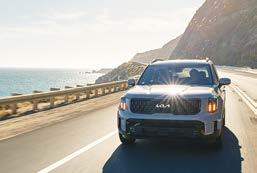
Kia advises all affected vehicle owners to park their vehicles outside and away from other vehicles and structures until the necessary repairs are completed, to prevent possible injuries and damage resulting from the fire hazard.
To address the defect, Kia dealers will install a bracket for the power seat switch back covers and replace the seat slide
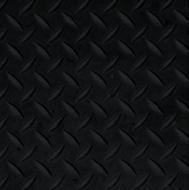

knobs at no cost to the owners. Notifications to affected vehicle owners are set to begin July 30. Owners seeking more information can contact Kia customer service at 800-3334542.
For additional assistance, Kia vehicle owners can visit NHTSA.gov/recalls or call the National Highway Traffic Safety Administration s (NHTSA) Vehicle Safety Hotline at 888327-4236. By entering their license plate number or 17-digit VIN, owners can verify if their vehicle is under recall. NHTSA also recommends downloading the SaferCar app to stay updated on current recalls.
The NHTSA emphasizes the importance of addressing safety recalls promptly. Its Recalls Lookup Tool and SaferCar app are valuable resources for vehicle owners to ensure their cars are safe and up-to-date with necessary repairs. The agency encourages owners to schedule recall repairs with their local dealers as soon as possible.
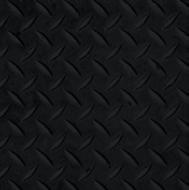
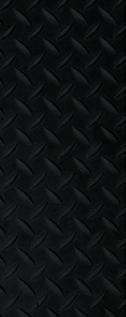

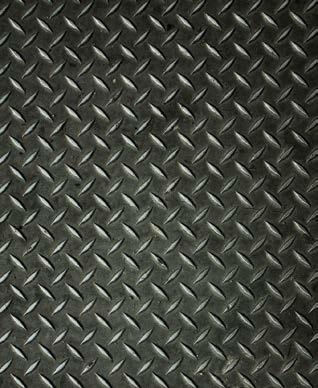


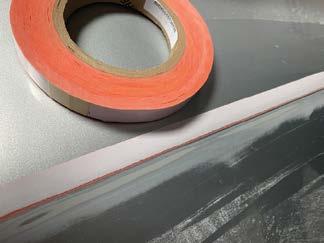
• Take photo
• Check photo to avoid






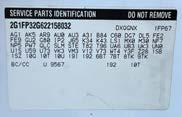
• Capture the label from a straight-on angle to prevent distortion.
• Maintain a consistent distance to include the entire label in the frame.
GRAVESOUMORTELLES: •Nevousappuyezpascontrelaporte. •N’utilizezpasuncouvre-siège quipeutbloquerledéploiementdu Voircoussingonflablelatéral.lemanuelduconducteurpour deplusamplesrenseignements.
• Avoid extreme zooming or cropping to maintain accuracy.
• Submit photos in JPEG or PNG format.

Conformstoregulations:





• Provide photos from different angles if the label has complex details.
• Ensure all relevant information is captured in the photo.


• Proof photos for clarity.
• Verify that all required details on the label are visible.





